WWI- U.S. Impact at home
Seeing the Big Picture
All documents and text associated with this activity are printed below, followed by a worksheet for student responses.Introduction
What caused the United States to enter the war?Name:
Class:
Class:
Worksheet
WWI- U.S. Impact at home
Seeing the Big Picture
Examine the documents and text included in this activity. Consider how each document or piece of text relates to each other and create matched pairs. Write the text or document number next to its match below. Write your conclusion response in the space provided.1
2
3
4
5
6
7
8
9
10
11
12
1
Activity Element
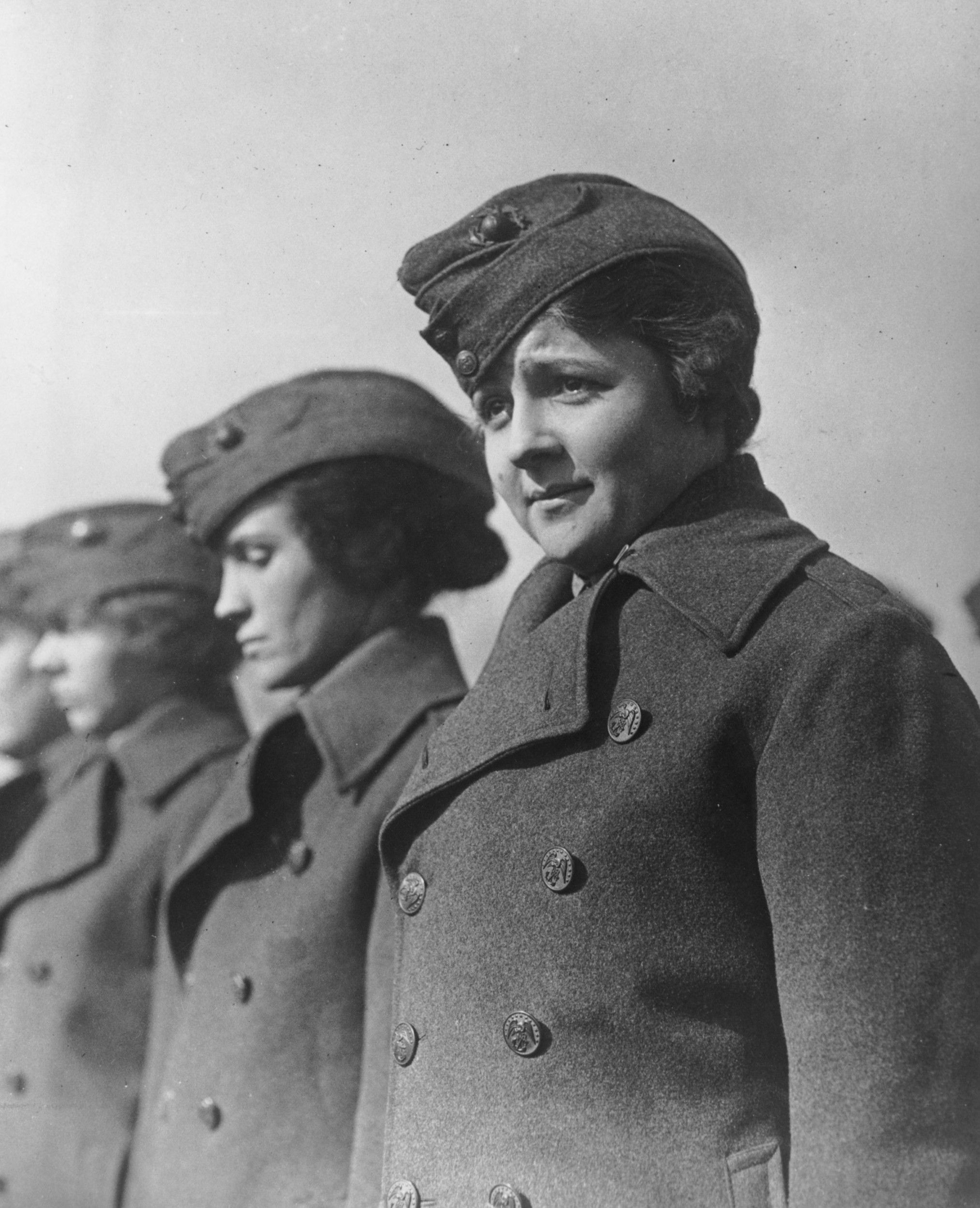
2
Activity Element

3
Activity Element
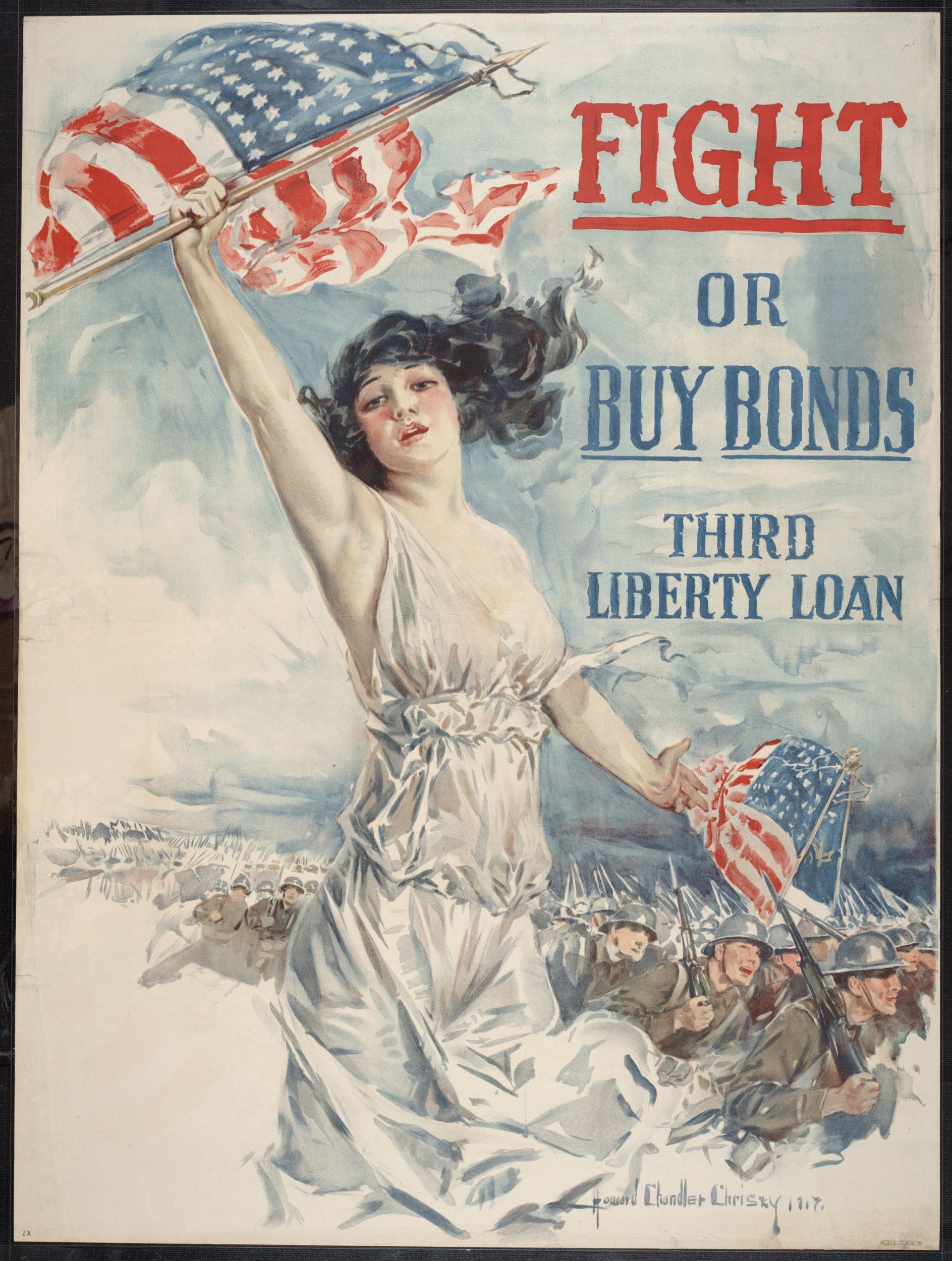
4
Activity Element
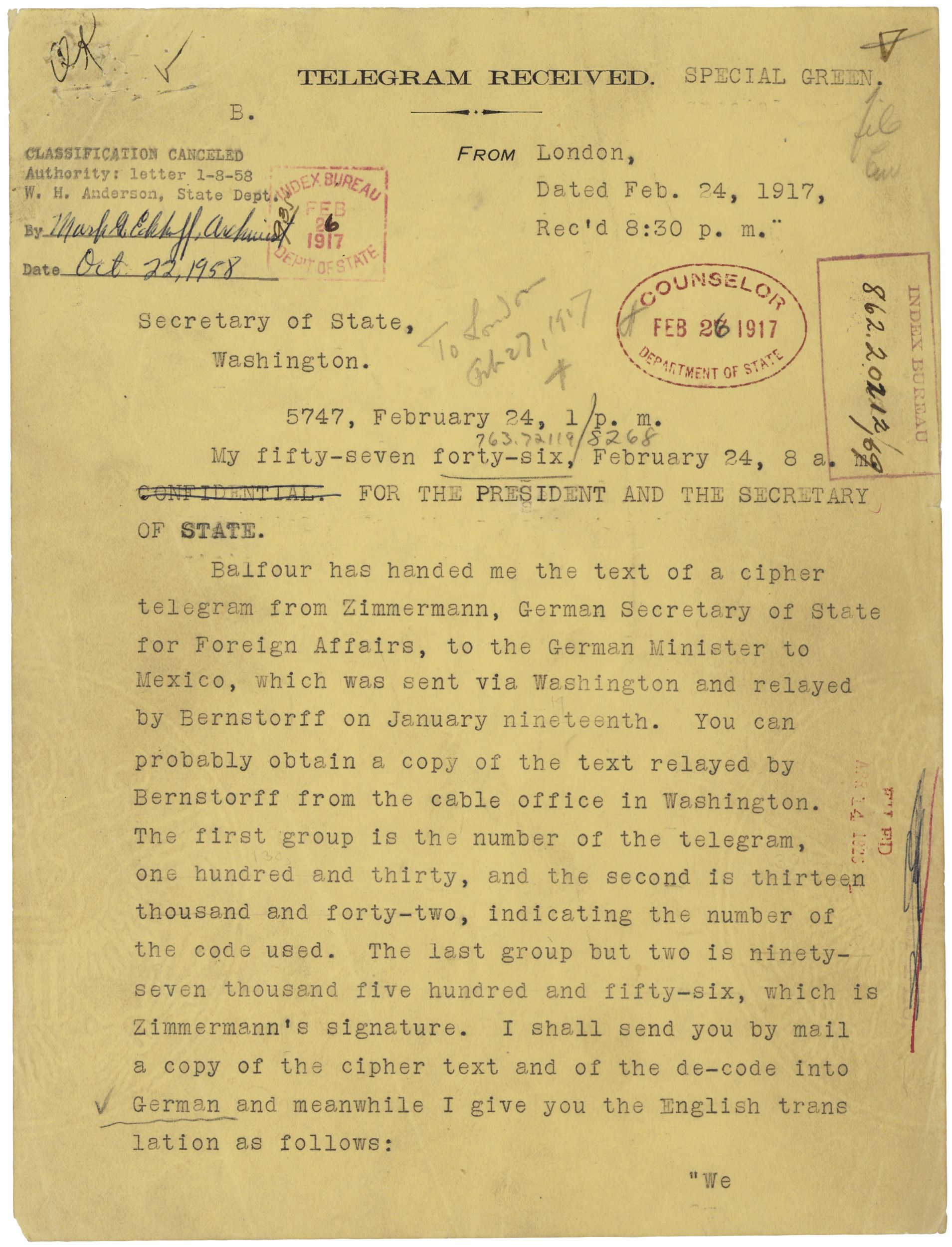
5
Activity Element

6
Activity Element

7
Activity Element

8
Activity Element
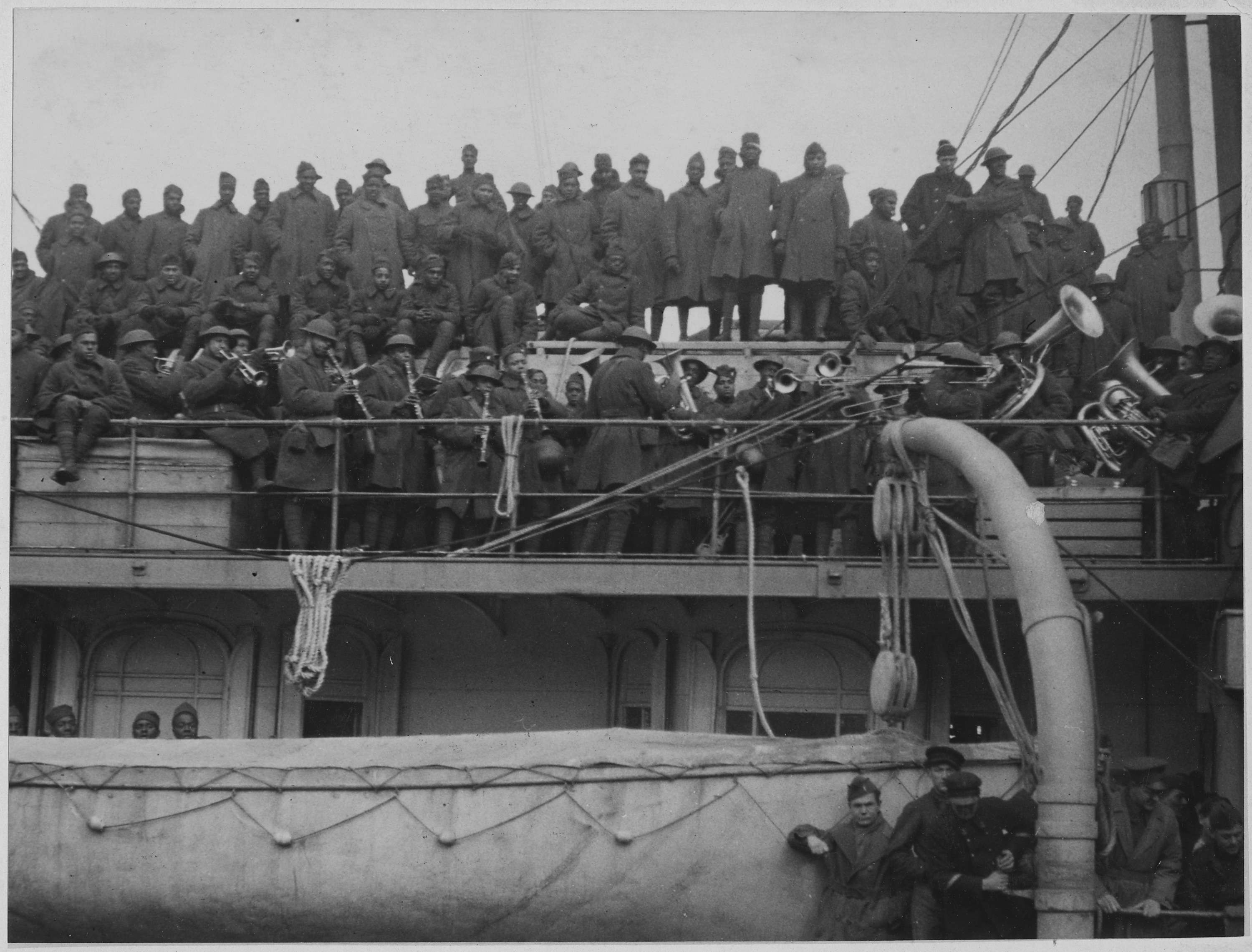
9
Activity Element

10
Activity Element
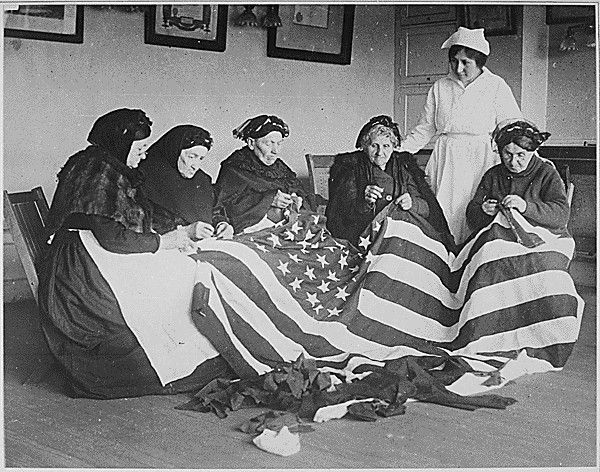
11
Activity Element
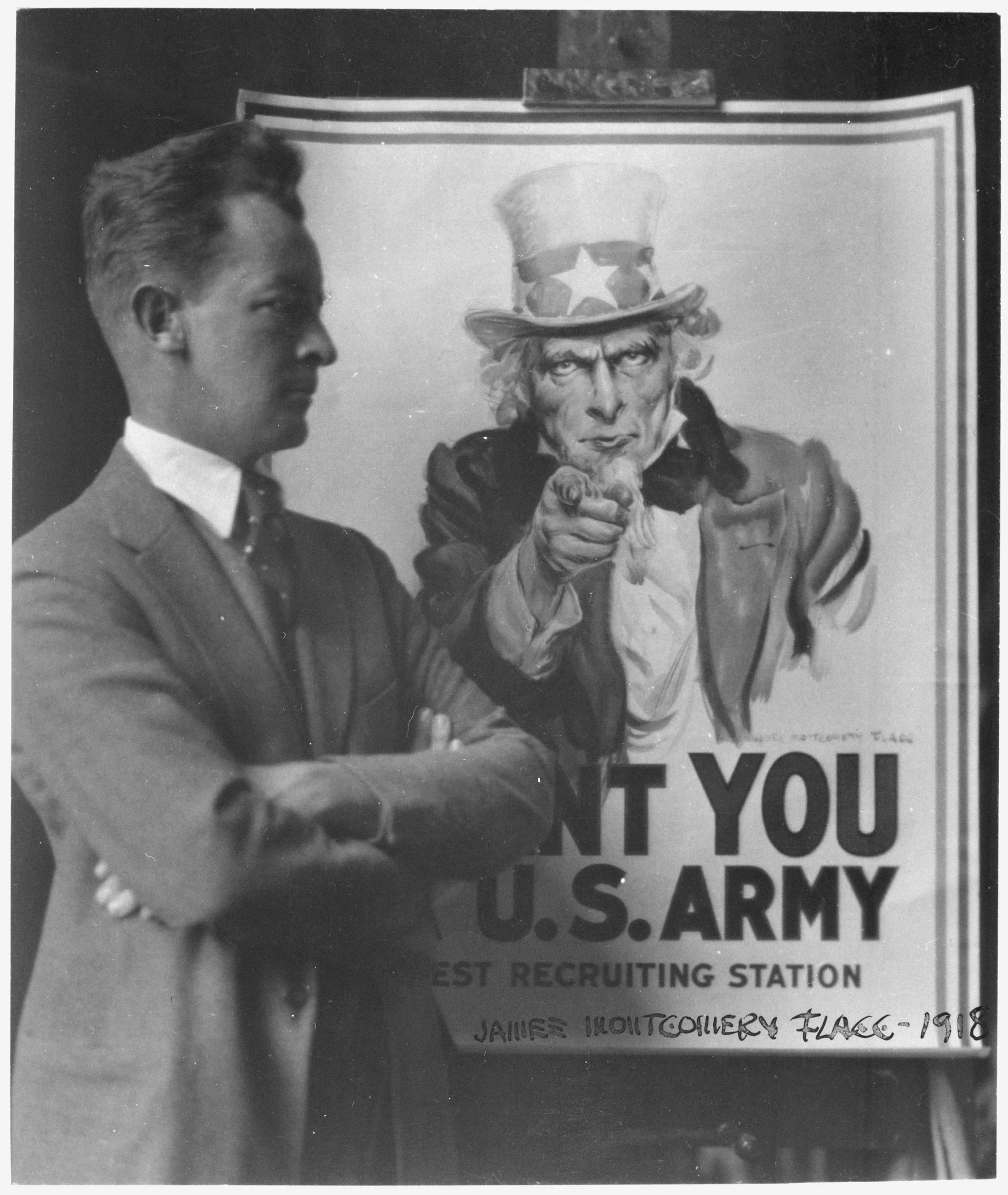
12
Activity Element
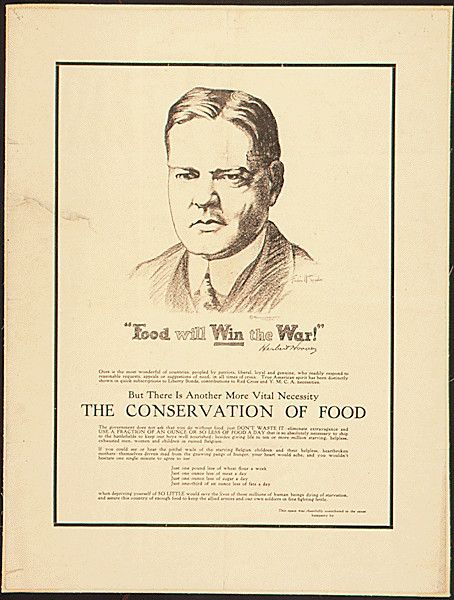
13
Activity Element
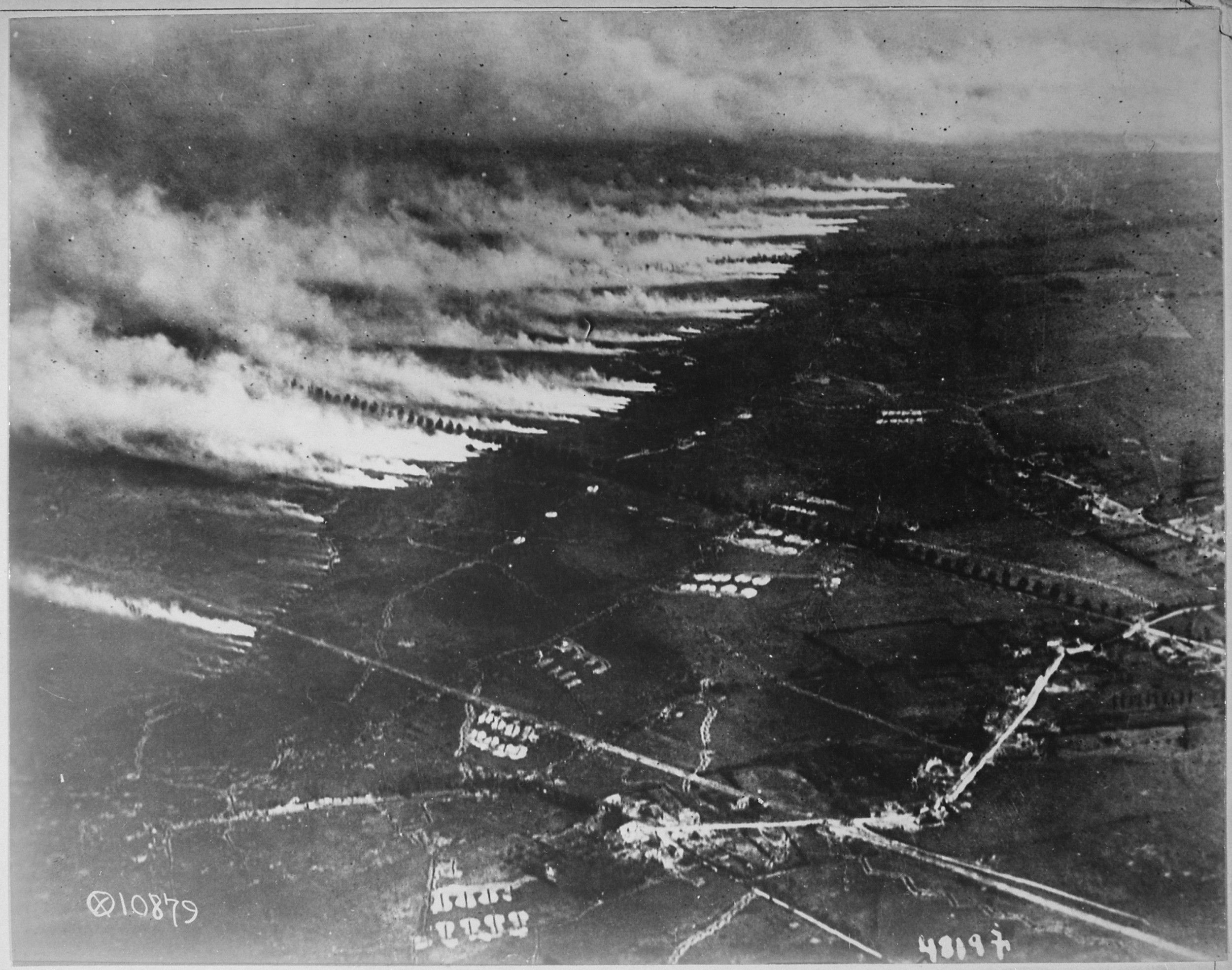
14
Activity Element
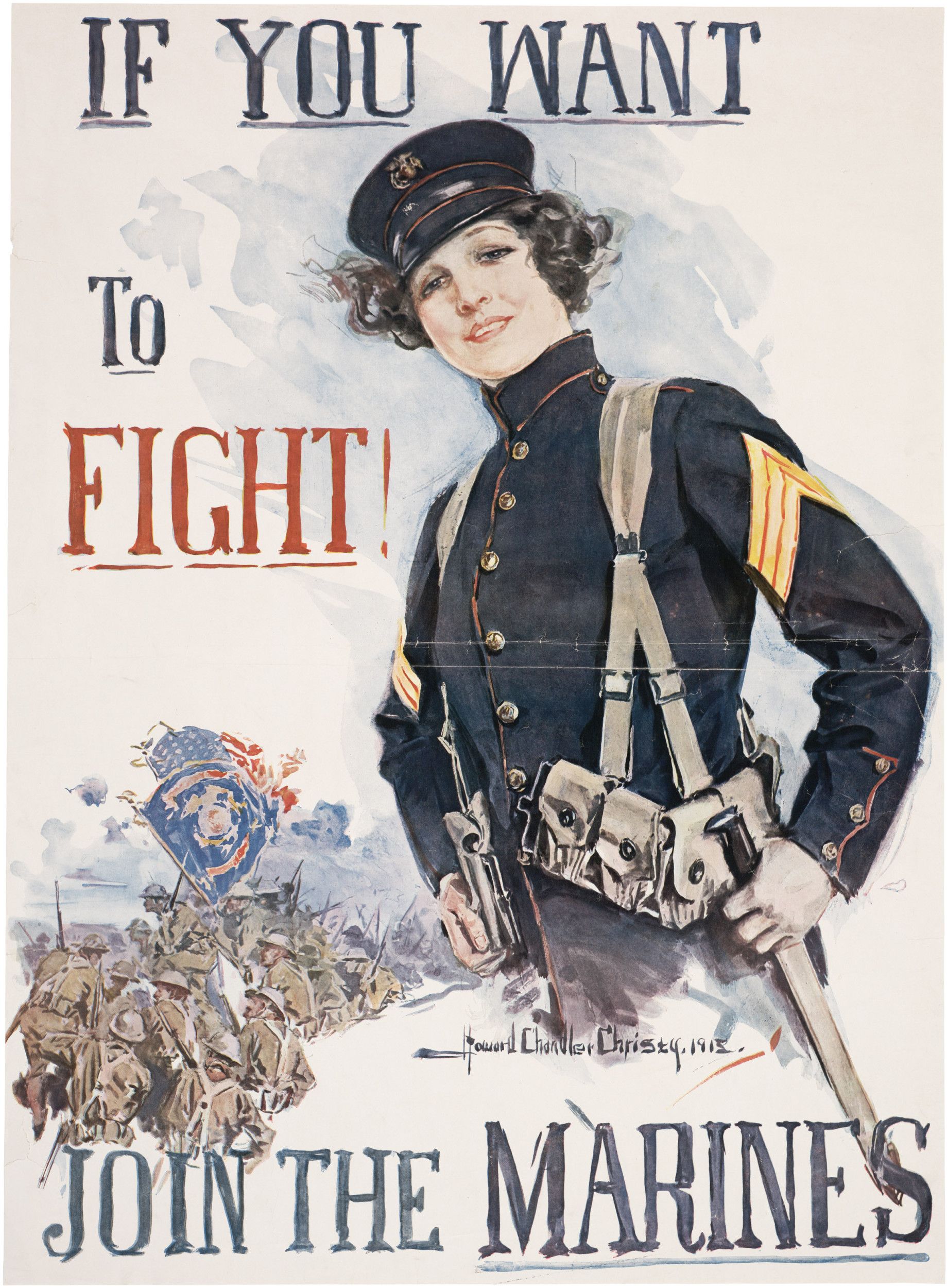
15
Activity Element
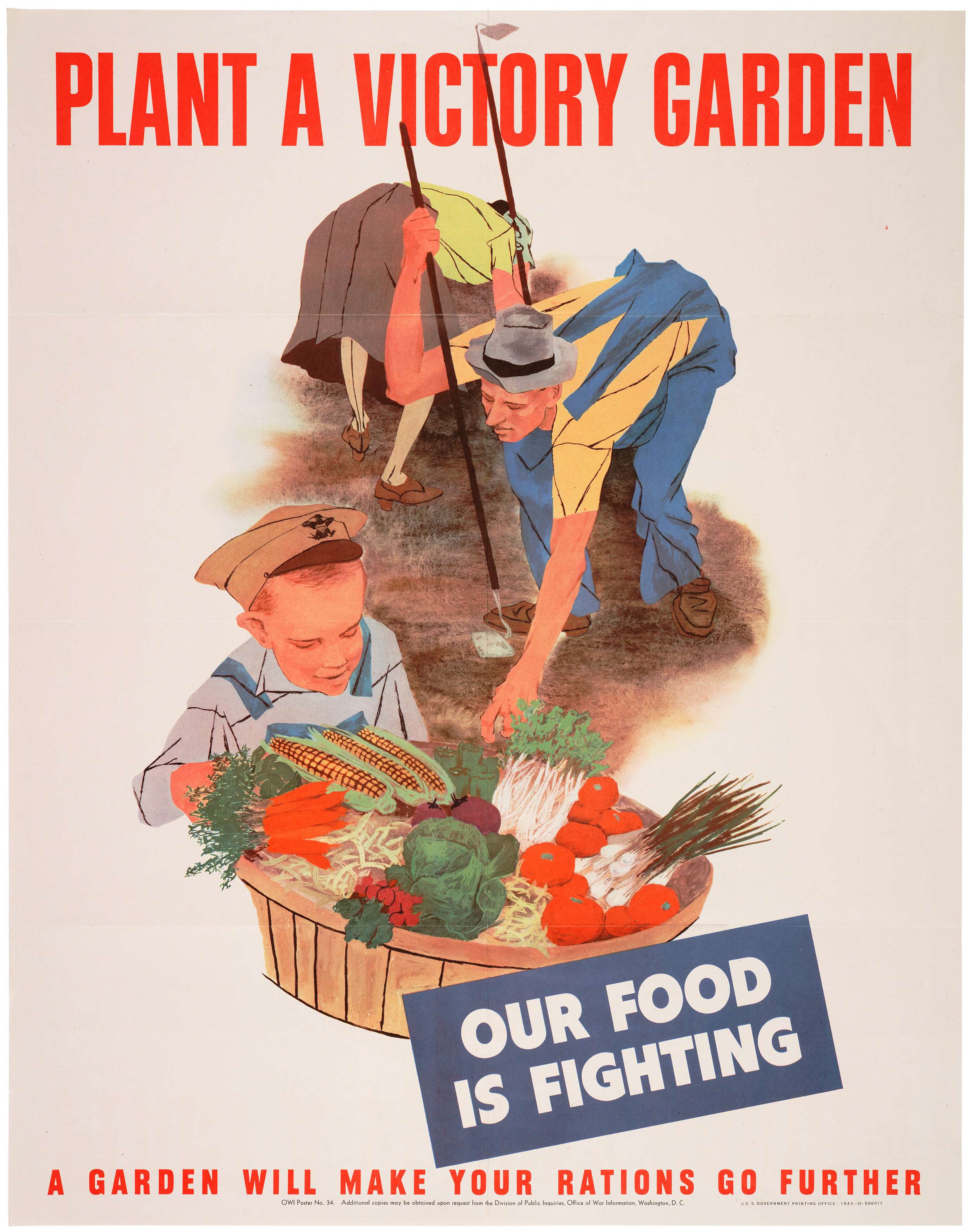
16
Activity Element
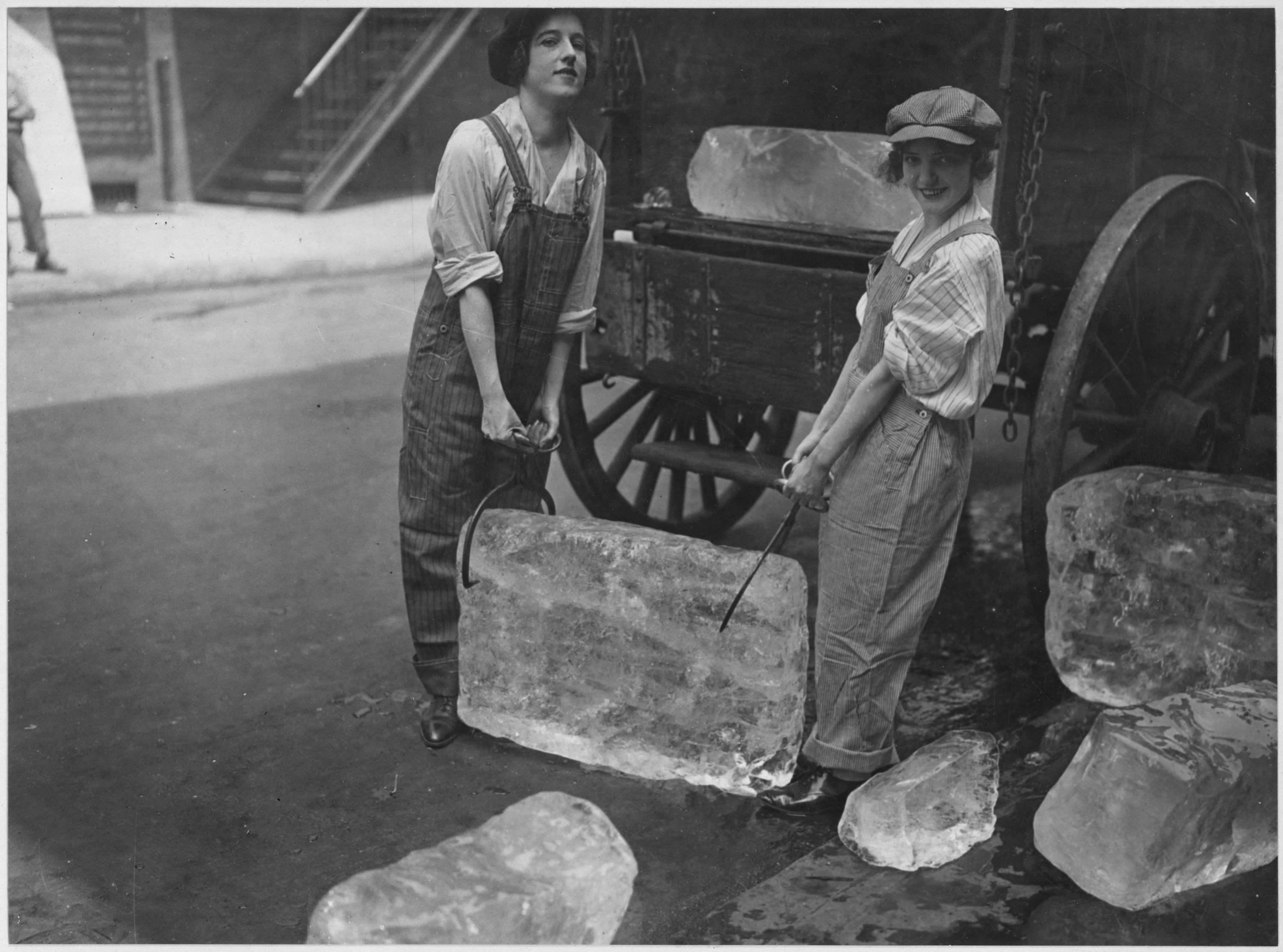
17
Activity Element
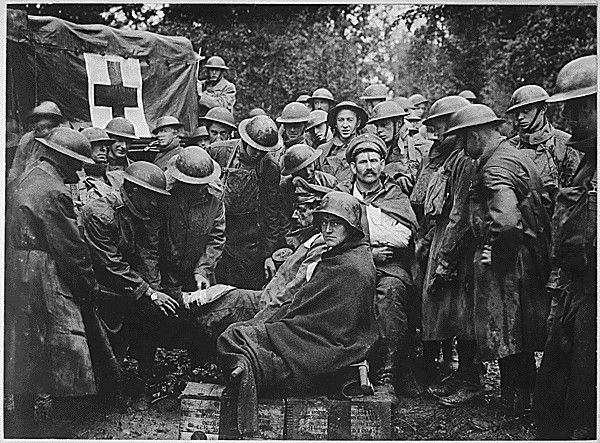
18
Activity Element
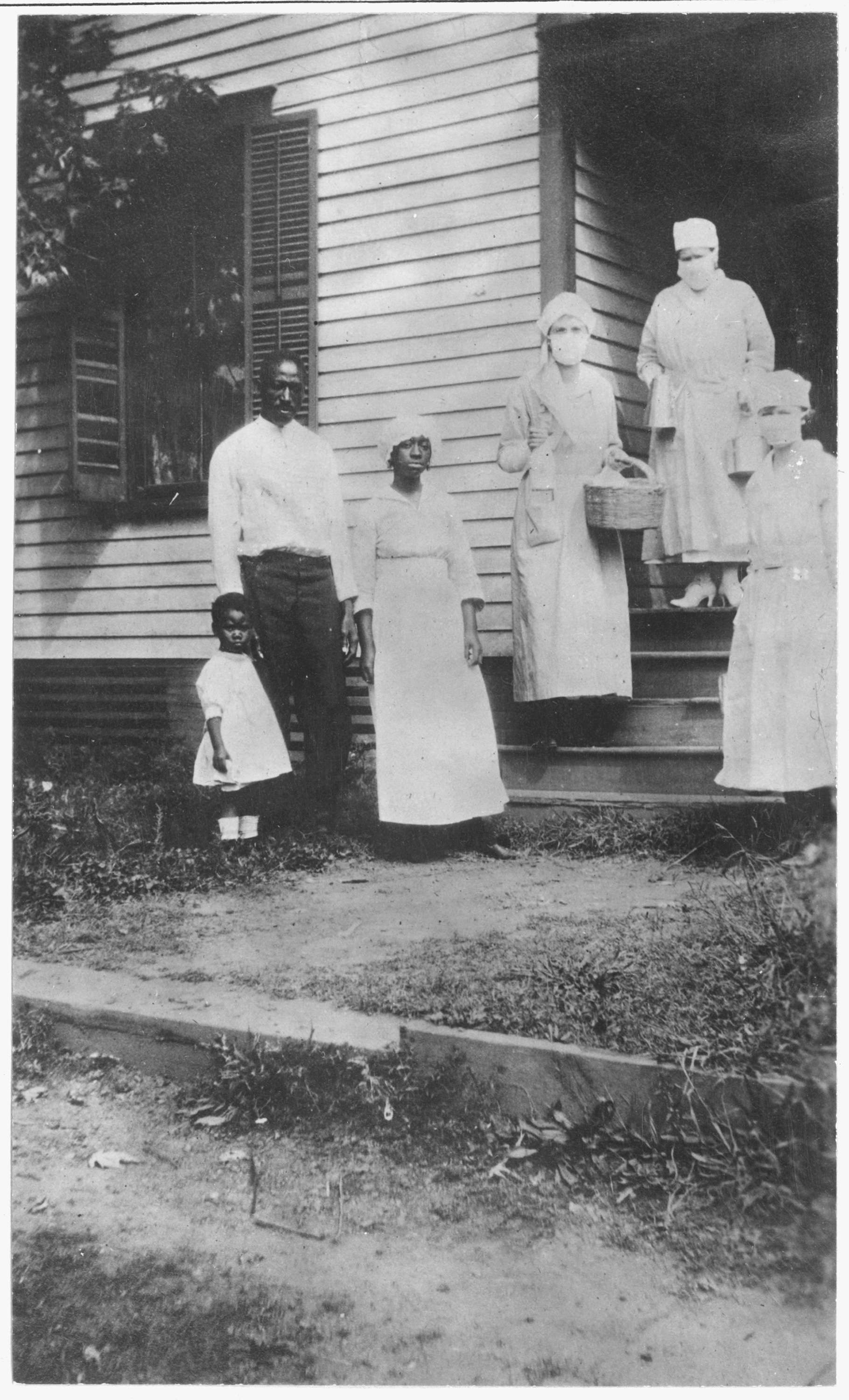
19
Activity Element
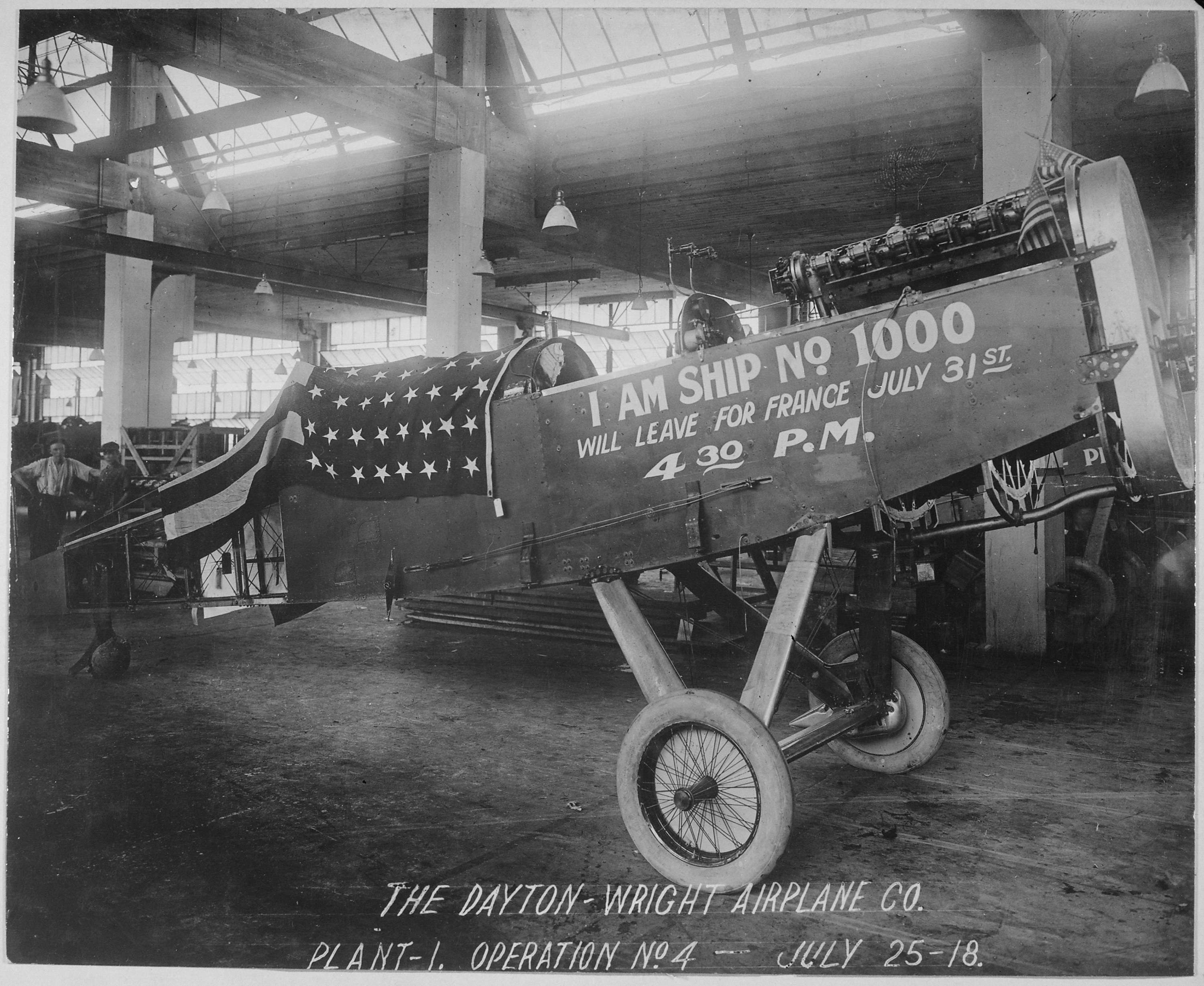
20
Activity Element
a low-interest loan by civilians to the government, meant to be repaid in a number of years. This was a war for civilials to support and fund the war effort.
21
Activity Element

22
Activity Element

23
Activity Element
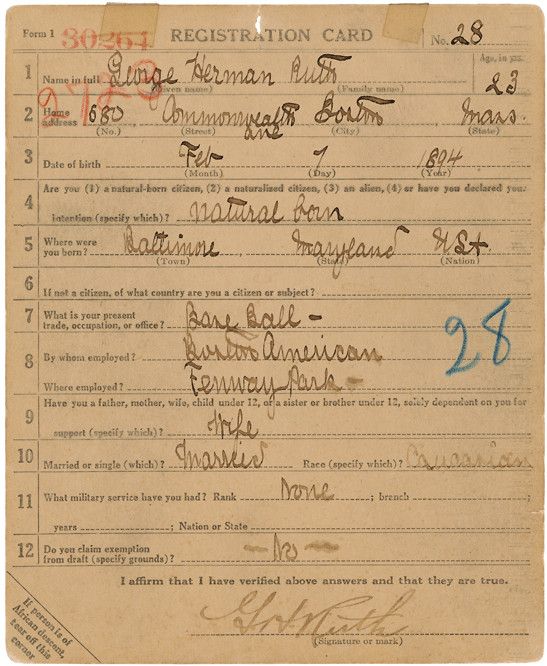
24
Activity Element
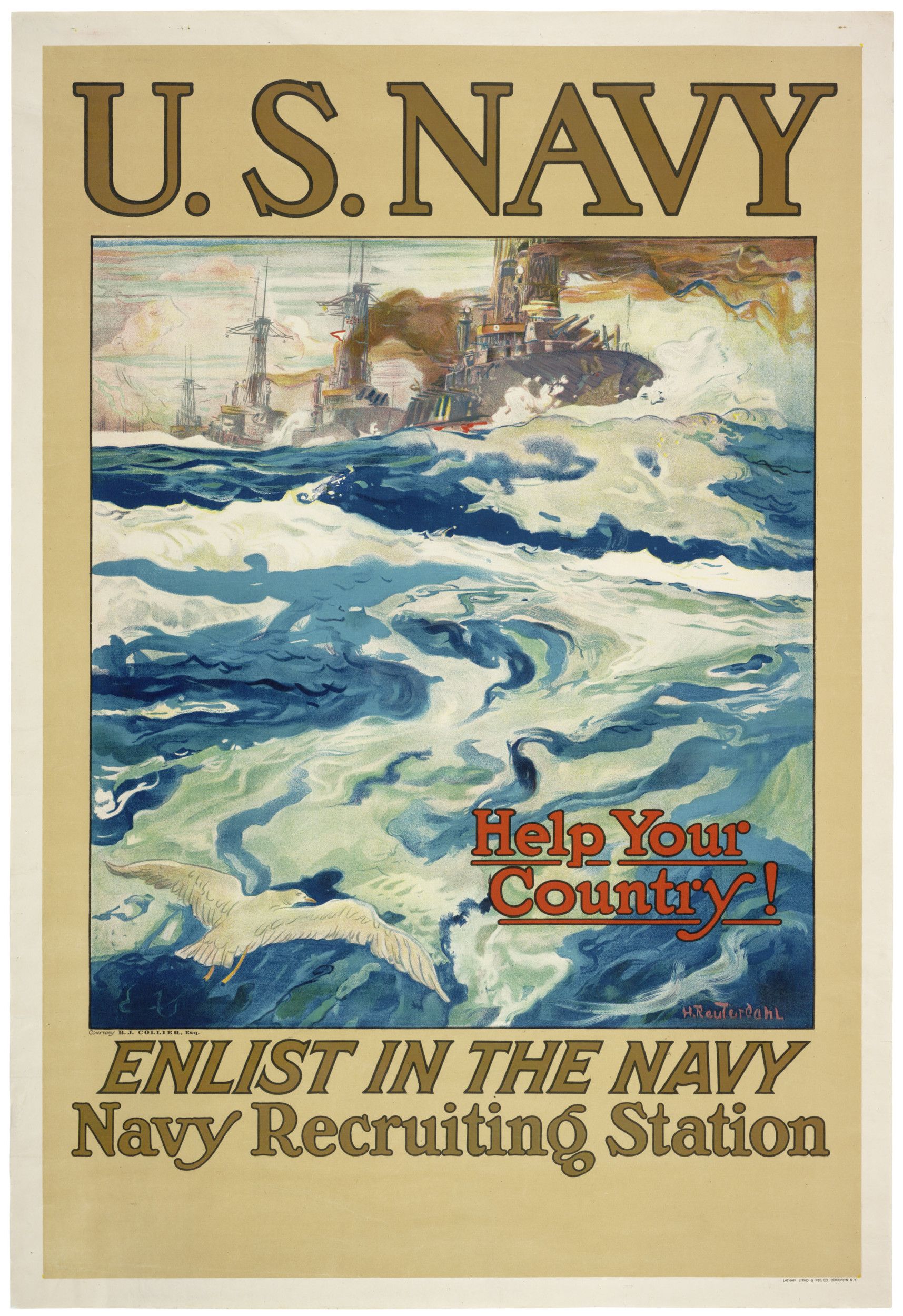
Culminating Document
'Fight or Buy Bonds. Third Liberty Loan.'
1917
Additional details from our exhibits and publications
American artist Howard Chandler Christy created this poster for the Third Liberty Loan war bond drive during World War I. Published in 1917 by Forbes of Boston, the poster shows “America” waving a flag encouraging Americans to help with the war effort by joining the military or purchasing bonds to finance the war. Christy, one of the best-known artists in America before the war, created many World War I posters.
This primary source comes from the Records of the U.S. Food Administration.
National Archives Identifier: 512621
Full Citation: 'Fight or Buy Bonds. Third Liberty Loan.'; 1917; Records of the U.S. Food Administration, . [Online Version, https://docsteach.org/documents/document/fight-or-buy-bonds-third-liberty-loan, April 28, 2024]'Fight or Buy Bonds. Third Liberty Loan.'
Page 2

Conclusion
WWI- U.S. Impact at home
Seeing the Big Picture
What effect did entering the war have on the the people at home in the United States?Your Response
Document
James Montgomery Flagg, appointed 'official artist' in New York State by Governor Whitman
1917
The original caption for this photograph reads; James Montgomery Flagg, appointed "official artist" in New York State by Governor Whitman.
This primary source comes from the Records of the War Department General and Special Staffs.
National Archives Identifier: 533470
Full Citation: Photograph 165-WW-61(2); James Montgomery Flagg, appointed 'official artist' in New York State by Governor Whitman; 1917; American Unofficial Collection of World War I Photographs, 1917 - 1918; Records of the War Department General and Special Staffs, ; National Archives at College Park, College Park, MD. [Online Version, https://docsteach.org/documents/document/james-montgomery-flagg, April 28, 2024]James Montgomery Flagg, appointed 'official artist' in New York State by Governor Whitman
Page 1

Document
Help Your Country
ca. 1914-1918
This primary source comes from the Naval Records Collection of the Office of Naval Records and Library.
National Archives Identifier: 1633556
Full Citation: Help Your Country ; ca. 1914-1918; Naval Records Collection of the Office of Naval Records and Library, . [Online Version, https://docsteach.org/documents/document/help-your-country, April 28, 2024]Help Your Country
Page 1
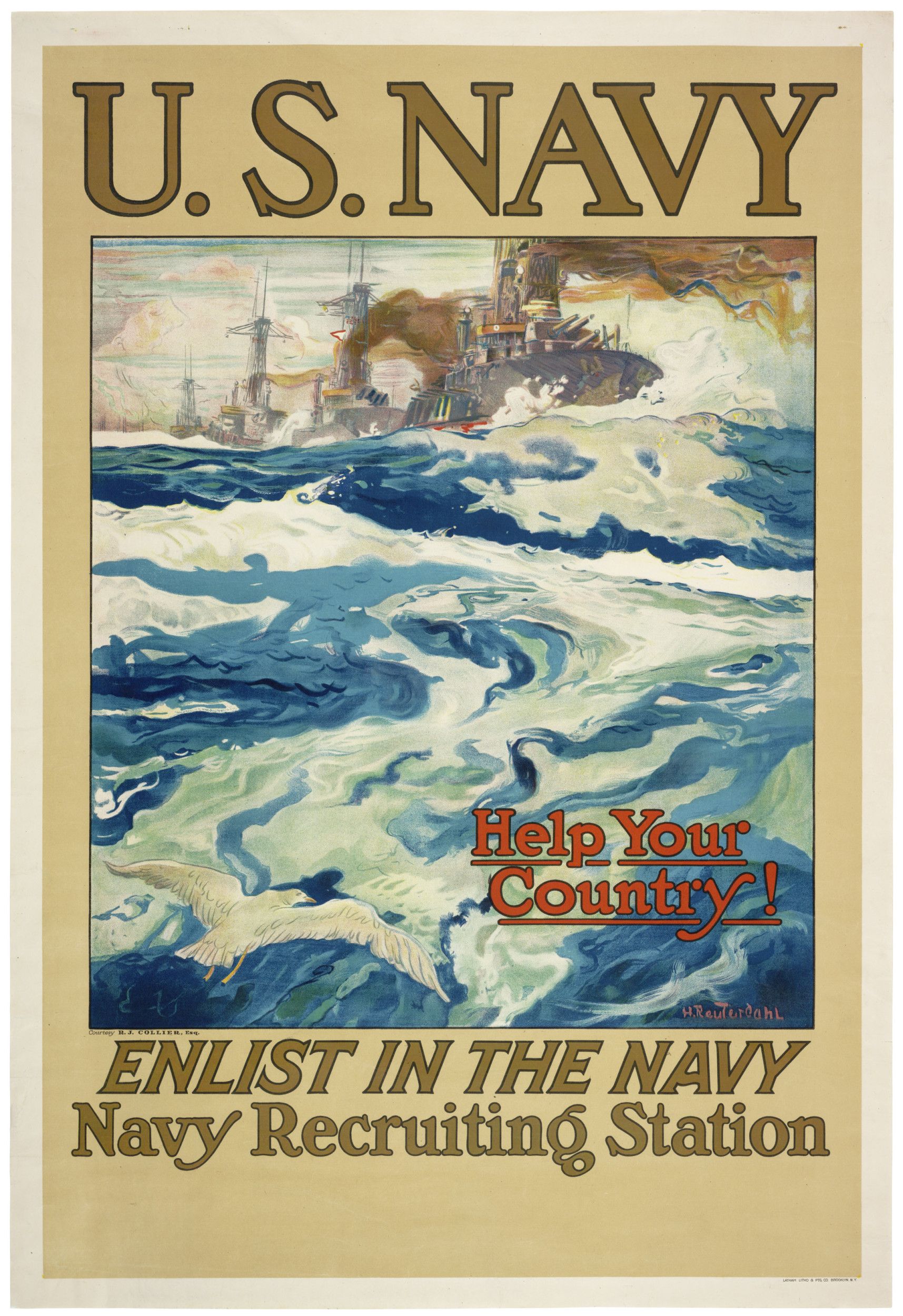
Document
Presidential Proclamation 1364 of April 6, 1917, by President Woodrow Wilson declaring war against Germany
4/6/1917
President Woodrow Wilson issued this proclamation declaring war against Germany on April 6, 1917. Wilson also called on residents in the United States, citizen and immigrant alike, to uphold all laws and provide support for all measures adopted in order to protect the nation and secure peace. For individuals termed "alien enemies" – all natives, citizens, denizens, or subjects of Germany (including American born women who married German men) – this showing of loyalty and devotion required a number of additional parameters and processes.
This primary source comes from the General Records of the United States Government.
National Archives Identifier: 299966
Full Citation: Presidential Proclamation 1364 of April 6, 1917, by President Woodrow Wilson declaring war against Germany; 4/6/1917; Presidential Proclamations, 1791 - 2016; General Records of the United States Government, ; National Archives Building, Washington, DC. [Online Version, https://docsteach.org/documents/document/presidential-proclamation-1364, April 28, 2024]Presidential Proclamation 1364 of April 6, 1917, by President Woodrow Wilson declaring war against Germany
Page 1
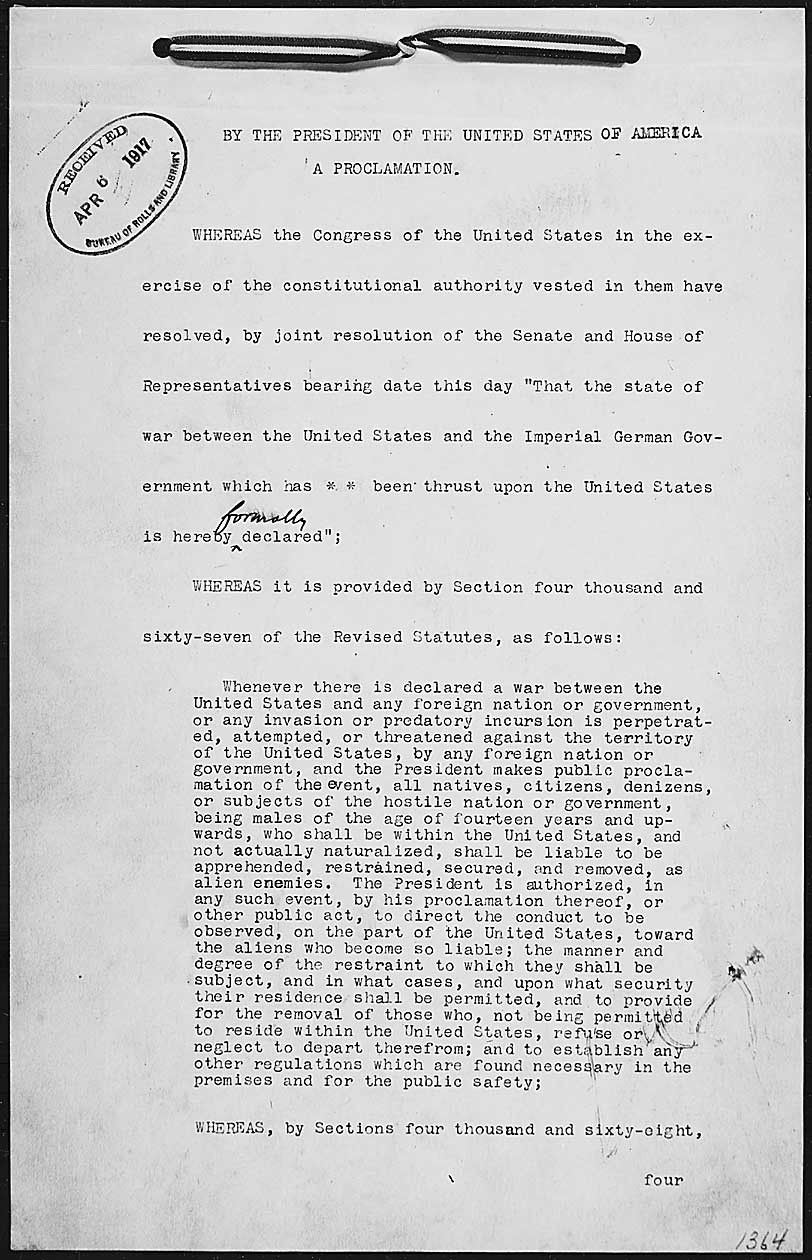
Presidential Proclamation 1364 of April 6, 1917, by President Woodrow Wilson declaring war against Germany
Page 2
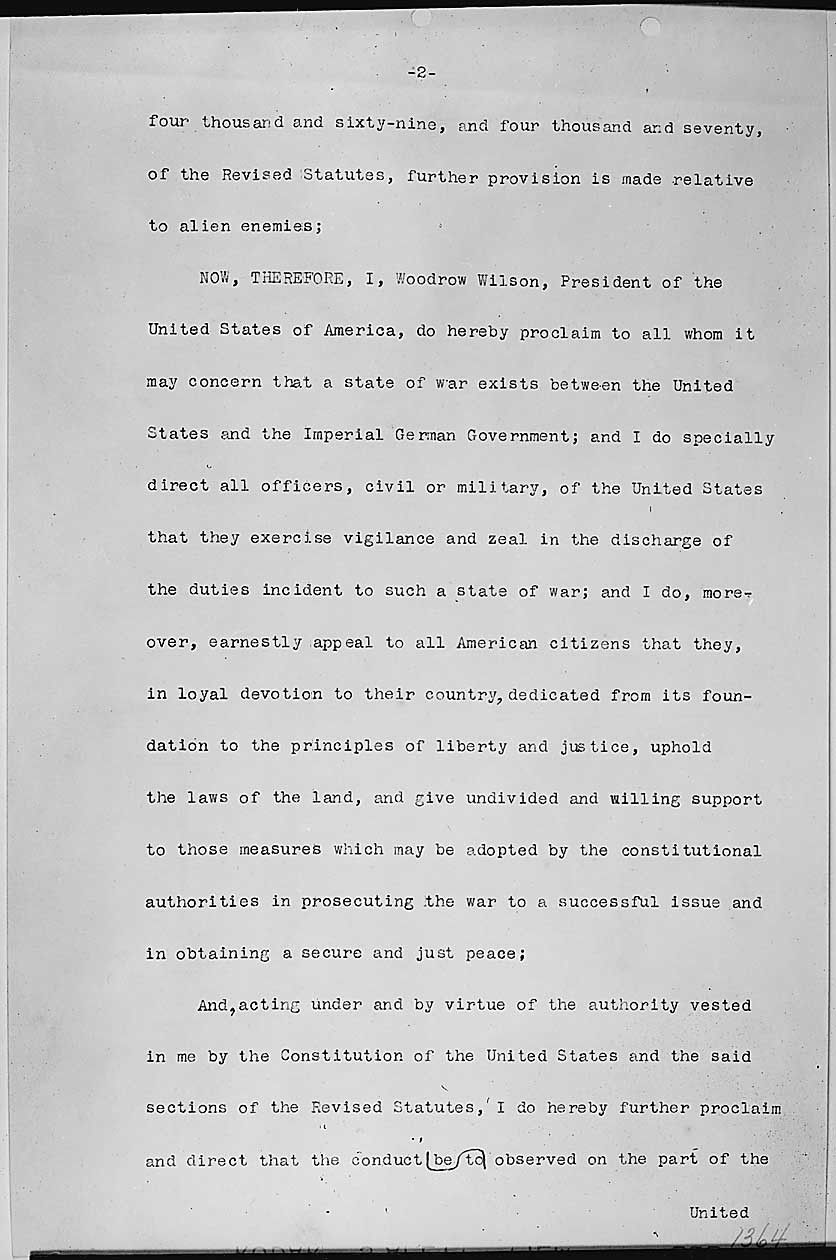
Presidential Proclamation 1364 of April 6, 1917, by President Woodrow Wilson declaring war against Germany
Page 3
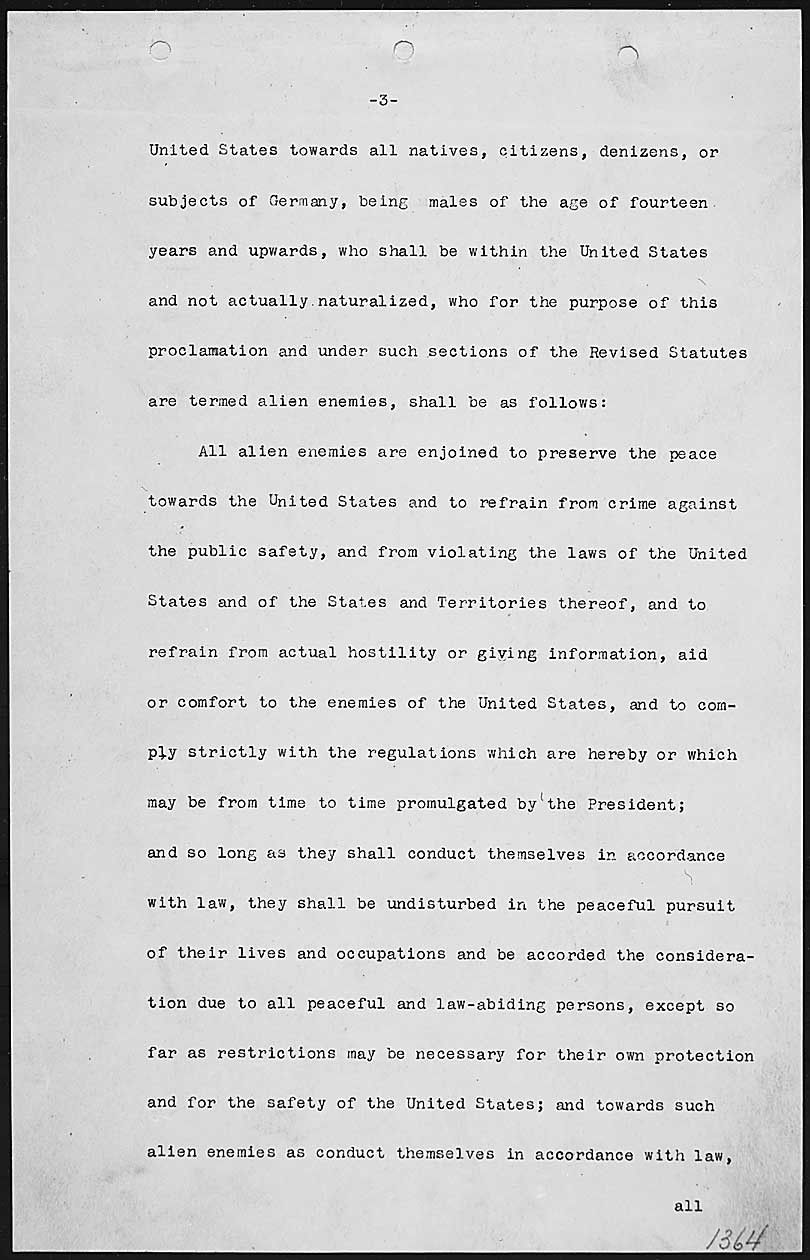
Presidential Proclamation 1364 of April 6, 1917, by President Woodrow Wilson declaring war against Germany
Page 4

Presidential Proclamation 1364 of April 6, 1917, by President Woodrow Wilson declaring war against Germany
Page 5
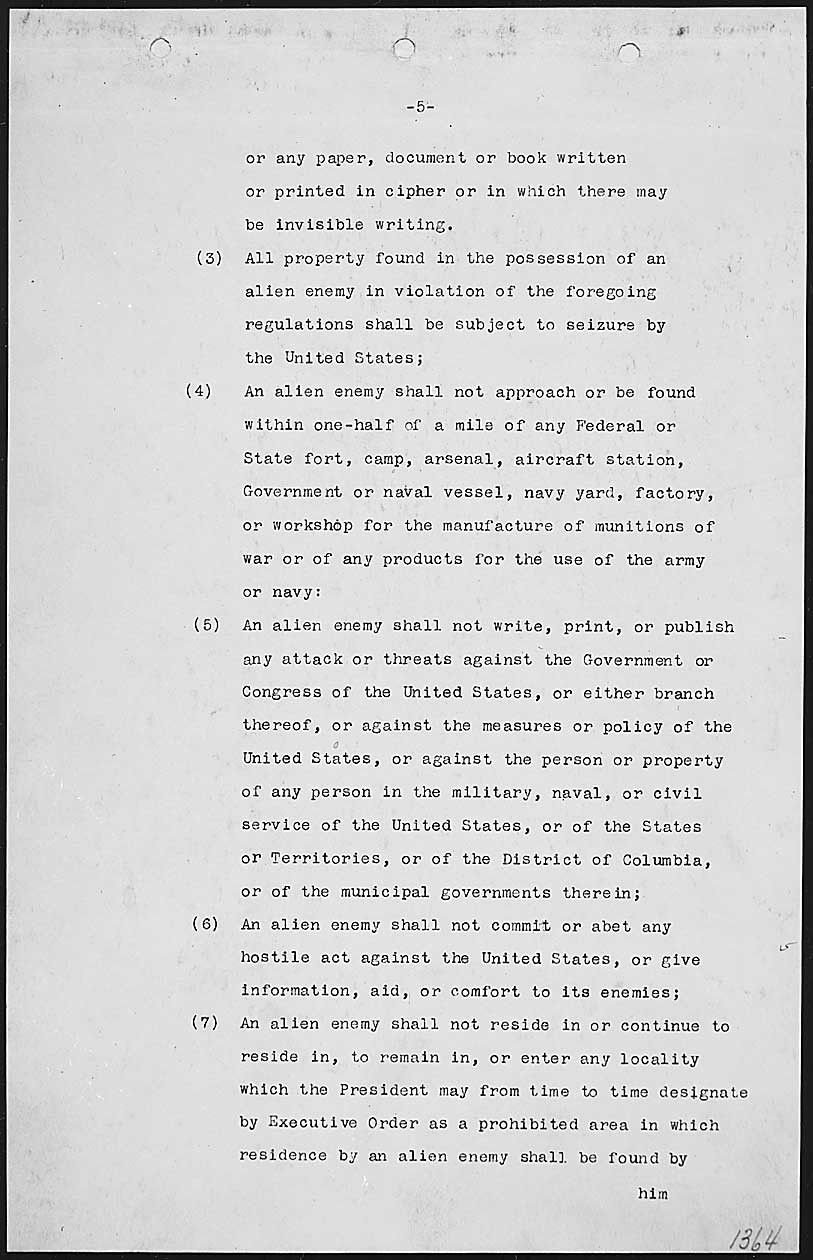
Presidential Proclamation 1364 of April 6, 1917, by President Woodrow Wilson declaring war against Germany
Page 6
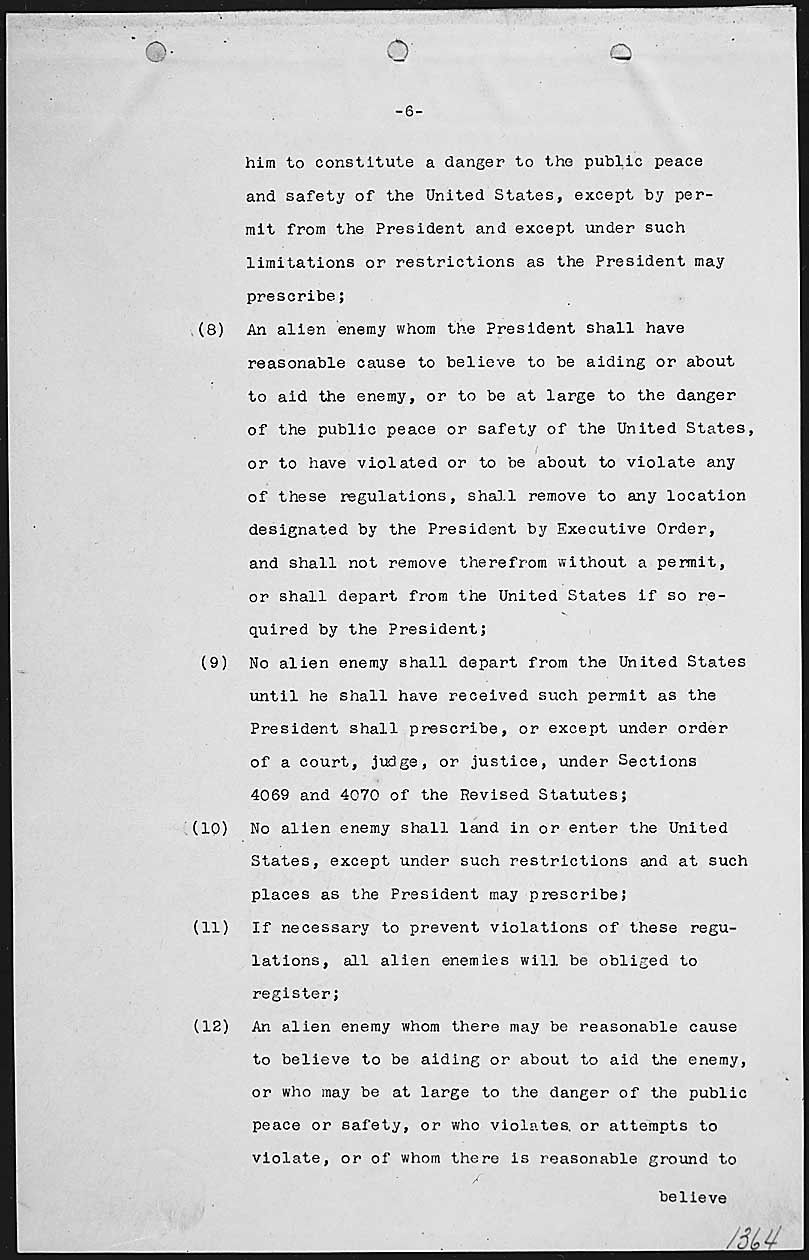
Presidential Proclamation 1364 of April 6, 1917, by President Woodrow Wilson declaring war against Germany
Page 7
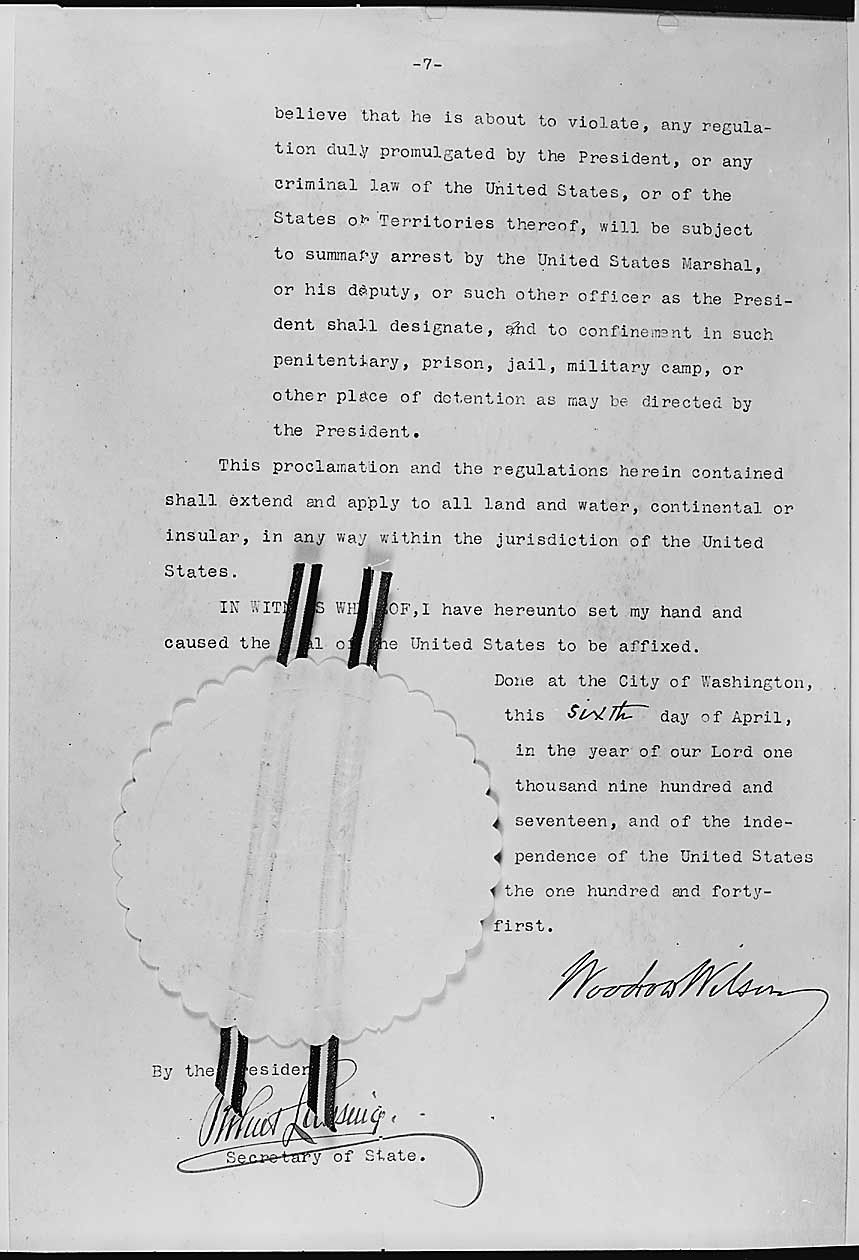
Document
Telegram from United States Ambassador Walter Page to President Woodrow Wilson Conveying a Translation of the Zimmermann Telegram
2/24/1917
U.S. Ambassador Walter Page sent this telegram to President Woodrow Wilson conveying a translation of the Zimmermann Telegram. In January 1917, the United States was neutral in the European war that would eventually be called World War I. The Zimmermann Telegram would be the catalyst to change everything.
German Foreign Minister Arthur Zimmermann sent an encoded message to the President of Mexico, in which plans to begin unrestricted submarine warfare were revealed and an alliance with Mexico was proposed, on January 16, 1917. British intelligence intercepted the telegram and deciphered it. After deciphering the message, the British Government passed its contents on to the American Government. The British ambassador expressed that the British Government would like the method in which the telegram was intercepted to be kept secret, but it has no restriction on making the telegram public.
The decoded message that Germany sent to Mexico reads:
German Foreign Minister Arthur Zimmermann sent an encoded message to the President of Mexico, in which plans to begin unrestricted submarine warfare were revealed and an alliance with Mexico was proposed, on January 16, 1917. British intelligence intercepted the telegram and deciphered it. After deciphering the message, the British Government passed its contents on to the American Government. The British ambassador expressed that the British Government would like the method in which the telegram was intercepted to be kept secret, but it has no restriction on making the telegram public.
The decoded message that Germany sent to Mexico reads:
FROM 2nd from London # 5747.
We intend to begin on the first of February unrestricted submarine warfare. We shall endeavor in spite of this to keep the United States of America neutral. In the event of this not succeeding, we make Mexico a proposal or alliance on the following basis: make war together, make peace together, generous financial support and an understanding on our part that Mexico is to reconquer the lost territory in Texas, New Mexico, and Arizona. The settlement in detail is left to you. You will inform the President of the above most secretly as soon as the outbreak of war with the United States of America is certain and add the suggestion that he should, on his own initiative, invite Japan to immediate adherence and at the same time mediate between Japan and ourselves. Please call the President's attention to the fact that the ruthless employment of our submarines now offers the prospect of compelling England in a few months to make peace.
Signed, ZIMMERMANN
Transcript
[handwritten in upper left corner] [OK]TELEGRAM RECEIVED. SPECIAL GREEN.
[handwritten on right] file
[stamp] CLASSIFICATION CANCELED
Authority: letter 1-8-58
W. H. Anderson, State Dept.
By [handwritten] Mark G Eckhoff, Archivist
Date [handwritten] Oct 27, 1958
[red stamp] INDEX BUREAU FEB 26 1917 DEPT OF STATE
FROM London,
Dated Feb. 24, 1917,
Rec'd 8:30 p. m.
[red stamp] COUNSELOR FEB 26 1917 DEPARTMENT OF STATE
[red stamp] INDEX BUREAU [handwritten] 862.2.0212/69
[handwritten in pencil] To London Feb 27, 1917 + +
Secretary of State,
Washington.
5747, February 24, 1 p. m.
My fifty-seven forty-six, [insert, handwritten in pencil: 763.72119/8268] February 24, 8 a. m.
[crossed out: CONFIDENTIAL] FOR THE PRESIDENT AND THE SECRETARY OF STATE.
Balfour has handed me the text of a cipher telegram from Zimmerman, German Secretary of State for Foreign Affairs, to the German Minister to Mexico, which was sent via Washington and relayed by Bernstorff on January nineteenth. You can probably obtain a copy of the text relayed by Bernstorff from the cable office in Washington. The first group is the number of the telegram, one hundred and thirty, and second is thirteen thousand and forty-two, indicating the number of
the code used. The last group but two is ninety-seven thousand five hundred and fifty-six, which is Zimmermann's signature. I shall send you by mail a copy of the cipher text and of the de-code into [underlined and check mark] German and meanwhile I give you the English translation as follows:
"We
[red stamp in right margin] FILED APR 14 192[illegible]
TELEGRAM RECEIVED.
FROM 2nd from London # 5747.
[stamp] CLASSIFICATION CANCELED
Authority: letter 1-8-58
W. H. Anderson, State Dept.
By [handwritten] Mark G Eckhoff, Archivist
Date [handwritten] Oct 27, 1958
"We intend to begin on the first of February unrestricted submarine warfare. We shall endeavor in spite of this to keep the United States of America neutral. In the event of this not succeeding, we make Mexico a proposal or alliance on the following basis: make war together, make peace together, generous financial support and an understanding on our part that Mexico is to reconquer the lost territory in Texas, New Mexico, and Arizona. The settlement in detail is left to you. You will inform the President of the above most secretly as soon as the outbreak of war with the United States of America is certain and add the suggestion that he should, on his own initiative, invite Japan to immediate adherence and at the same time mediate between Japan and ourselves. Please call the President's attention to the fact that the ruthless employment of our submarines now offers the prospect of compelling England in a few months to make peace." Signed, ZIMMERMANN.
The receipt of this information has so greatly exercised the British Government that they have lost no time in communicating it to me to transmit to you, in order that our Government may be able without delay to make such disposition as may
Authority: letter 1-8-58
W. H. Anderson, State Dept.
By [handwritten] Mark G Eckhoff, Archivist
Date [handwritten] Oct 27, 1958
"We intend to begin on the first of February unrestricted submarine warfare. We shall endeavor in spite of this to keep the United States of America neutral. In the event of this not succeeding, we make Mexico a proposal or alliance on the following basis: make war together, make peace together, generous financial support and an understanding on our part that Mexico is to reconquer the lost territory in Texas, New Mexico, and Arizona. The settlement in detail is left to you. You will inform the President of the above most secretly as soon as the outbreak of war with the United States of America is certain and add the suggestion that he should, on his own initiative, invite Japan to immediate adherence and at the same time mediate between Japan and ourselves. Please call the President's attention to the fact that the ruthless employment of our submarines now offers the prospect of compelling England in a few months to make peace." Signed, ZIMMERMANN.
The receipt of this information has so greatly exercised the British Government that they have lost no time in communicating it to me to transmit to you, in order that our Government may be able without delay to make such disposition as may
TELEGRAM RECEIVED.
FROM 3rd from London # 5747
[stamp] CLASSIFICATION CANCELED
Authority: letter 1-8-58
W. H. Anderson, State Dept.
By [handwritten] Mark G Eckhoff, Archivist
Date [handwritten] Oct 27, 1958
may be necessary in view of the threatened invasion
of our territory.
[crossed out: The following paragraph is strictly confidential.]
Early in the war, the British Government obtained possession of a copy of the German cipher code used in the above message and have made it their business to obtain copies of Bernstorff'e cipher telegrams to
Mexico, amongst other, which are sent back to London and deciphered here. This accounts for their being able to decipher this telegram from
the German Government to their representative in Mexico and also for the delay from [underlined in pencil] January nineteenth until now in their receiving the information. This system has hitherto been a jealously guarded secret and is only divulged now to you by the British Government in view of the extraordinary circumstances and their friendly feeling towards the United States. They earnestly request that you will keep the source of your information and the British Government's method of obtaining it profoundly secret but they put no prohibition on the publication of Zimmermann's telegram itself. [check mark]
The copies of this and other telegrams were not obtained in Washington but were [underlined in pencil] bought in Mexico.
I
TELEGRAM RECEIVED
From 4th from London #5747.
I have thanked Balfour for the service his Government has rendered us and suggest that a private official message of thanks from our Government to him would be beneficial.
[in pencil in left margin: approved [illegible] 27th [initials]]
I am informed that this information has not yet been given to the Japanese Government but I think it not unlikely that when it reaches them they may make a public statement on it in order to clear up their position regarding the United States and prove their good faith to their allies.
P A G E.
[stamp] CLASSIFICATION CANCELED
Authority: letter 1-8-58
W. H. Anderson, State Dept.
By [handwritten] Mark G. Eckhoff, Archivist
Date [handwritten] Oct. 27, 1958
I am informed that this information has not yet been given to the Japanese Government but I think it not unlikely that when it reaches them they may make a public statement on it in order to clear up their position regarding the United States and prove their good faith to their allies.
P A G E.
[stamp] CLASSIFICATION CANCELED
Authority: letter 1-8-58
W. H. Anderson, State Dept.
By [handwritten] Mark G. Eckhoff, Archivist
Date [handwritten] Oct. 27, 1958
This primary source comes from the General Records of the Department of State.
National Archives Identifier: 302022
Full Citation: Telegram from United States Ambassador Walter Page to President Woodrow Wilson Conveying a Translation of the Zimmermann Telegram; 2/24/1917; 862.20212 / 57 through 862.20212 / 311; Central Decimal Files, 1910 - 1963; General Records of the Department of State, ; National Archives at College Park, College Park, MD. [Online Version, https://docsteach.org/documents/document/translation-zimmermann-telegram, April 28, 2024]Telegram from United States Ambassador Walter Page to President Woodrow Wilson Conveying a Translation of the Zimmermann Telegram
Page 1
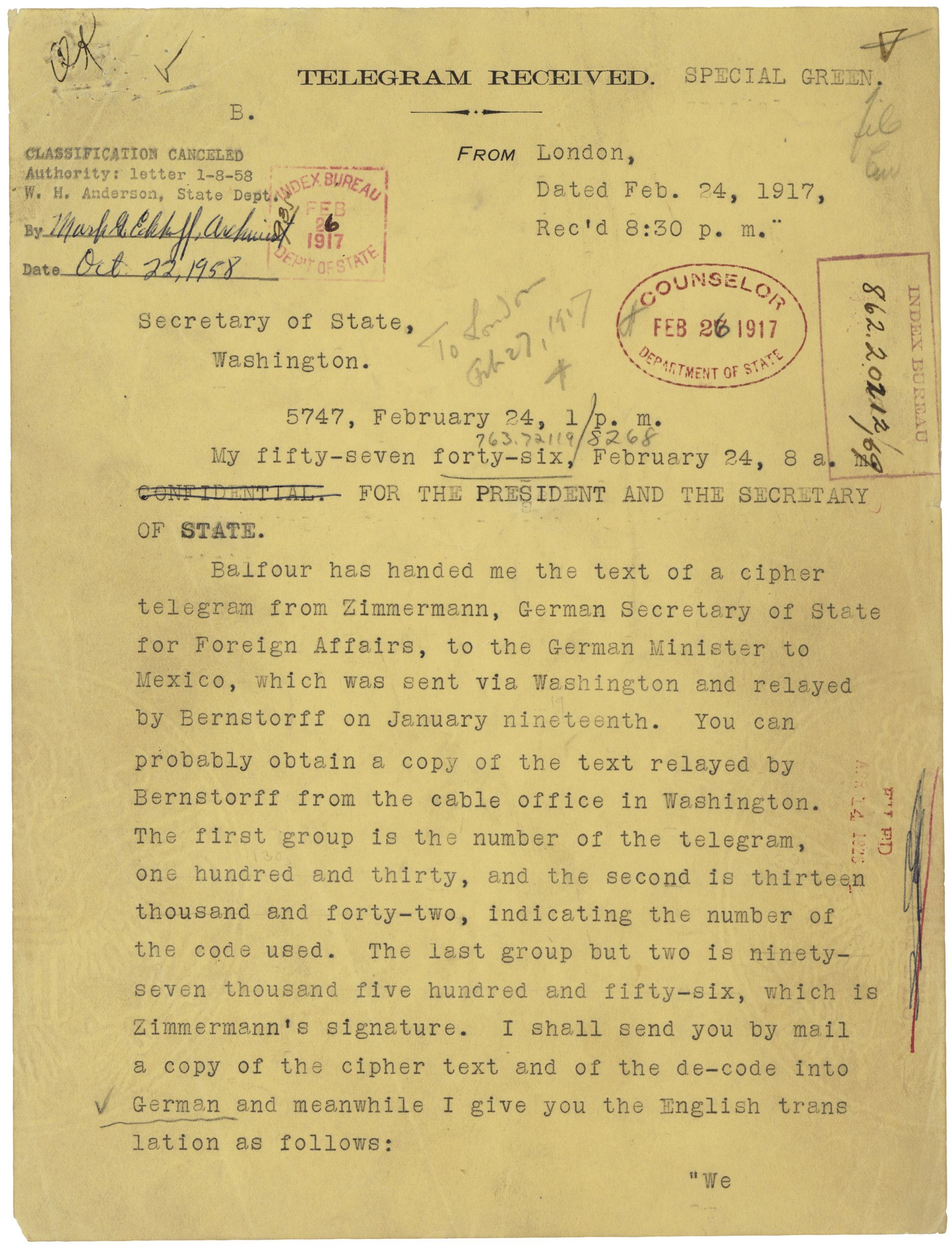
Telegram from United States Ambassador Walter Page to President Woodrow Wilson Conveying a Translation of the Zimmermann Telegram
Page 2

Telegram from United States Ambassador Walter Page to President Woodrow Wilson Conveying a Translation of the Zimmermann Telegram
Page 3

Telegram from United States Ambassador Walter Page to President Woodrow Wilson Conveying a Translation of the Zimmermann Telegram
Page 4

Document
Plant A Victory Garden. Our Food Is Fighting.
1941-1945
"Food will win the war and write the peace," announced Agriculture Secretary Claude Wickard in a statement to the press in early 1943. Even before the United States entered the war in 1941, U.S. farmers were producing at record levels to supply the food needs of the Allies.
After the Japanese bombing of Pearl Harbor, getting food and equipment to American troops strained production and distribution systems to their limits. Farm labor was in short supply as men left for military service. The Office of Civil Defense was given primary responsibility for convincing non-farm families to produce and preserve some of their food at home.
Although by the 1940s most people in the United States lived in towns and cities, many felt some romantic nostalgia for the farm life their parents and grandparents had left. Food rationing, begun in 1942 by limiting purchases of coffee and sugar and later expanded to other products, added practical necessity to nostalgia. This poster explains that "A garden will make your rations go further." Patriotic fervor was contagious and victory gardens sprang up everywhere.
Text adapted from "Victory Gardens in World War II" in the April/May 1986 National Council for the Social Studies (NCSS) publication Social Education.
After the Japanese bombing of Pearl Harbor, getting food and equipment to American troops strained production and distribution systems to their limits. Farm labor was in short supply as men left for military service. The Office of Civil Defense was given primary responsibility for convincing non-farm families to produce and preserve some of their food at home.
Although by the 1940s most people in the United States lived in towns and cities, many felt some romantic nostalgia for the farm life their parents and grandparents had left. Food rationing, begun in 1942 by limiting purchases of coffee and sugar and later expanded to other products, added practical necessity to nostalgia. This poster explains that "A garden will make your rations go further." Patriotic fervor was contagious and victory gardens sprang up everywhere.
Text adapted from "Victory Gardens in World War II" in the April/May 1986 National Council for the Social Studies (NCSS) publication Social Education.
This primary source comes from the Records of the Office of Government Reports.
National Archives Identifier: 513818
Full Citation: Poster 44-PA-368; Plant A Victory Garden. Our Food Is Fighting.; 1941-1945; World War II Posters, 1942 - 1945; Records of the Office of Government Reports, ; National Archives at College Park, College Park, MD. [Online Version, https://docsteach.org/documents/document/victory-garden-food-is-fighting, April 28, 2024]Plant A Victory Garden. Our Food Is Fighting.
Page 1

Document
'Food will Win the War, Herbert Hoover. But there is another Vital Necessity. The Conservation of Food...'
ca. 1917 - 1919
This primary source comes from the Records of the U.S. Food Administration.
National Archives Identifier: 512506
Full Citation: 'Food will Win the War, Herbert Hoover. But there is another Vital Necessity. The Conservation of Food...'; ca. 1917 - 1919; Records of the U.S. Food Administration, . [Online Version, https://docsteach.org/documents/document/food-will-win-the-war-herbert-hoover-but-there-is-another-vital-necessity-the-conservation-of-food, April 28, 2024]'Food will Win the War, Herbert Hoover. But there is another Vital Necessity. The Conservation of Food...'
Page 1
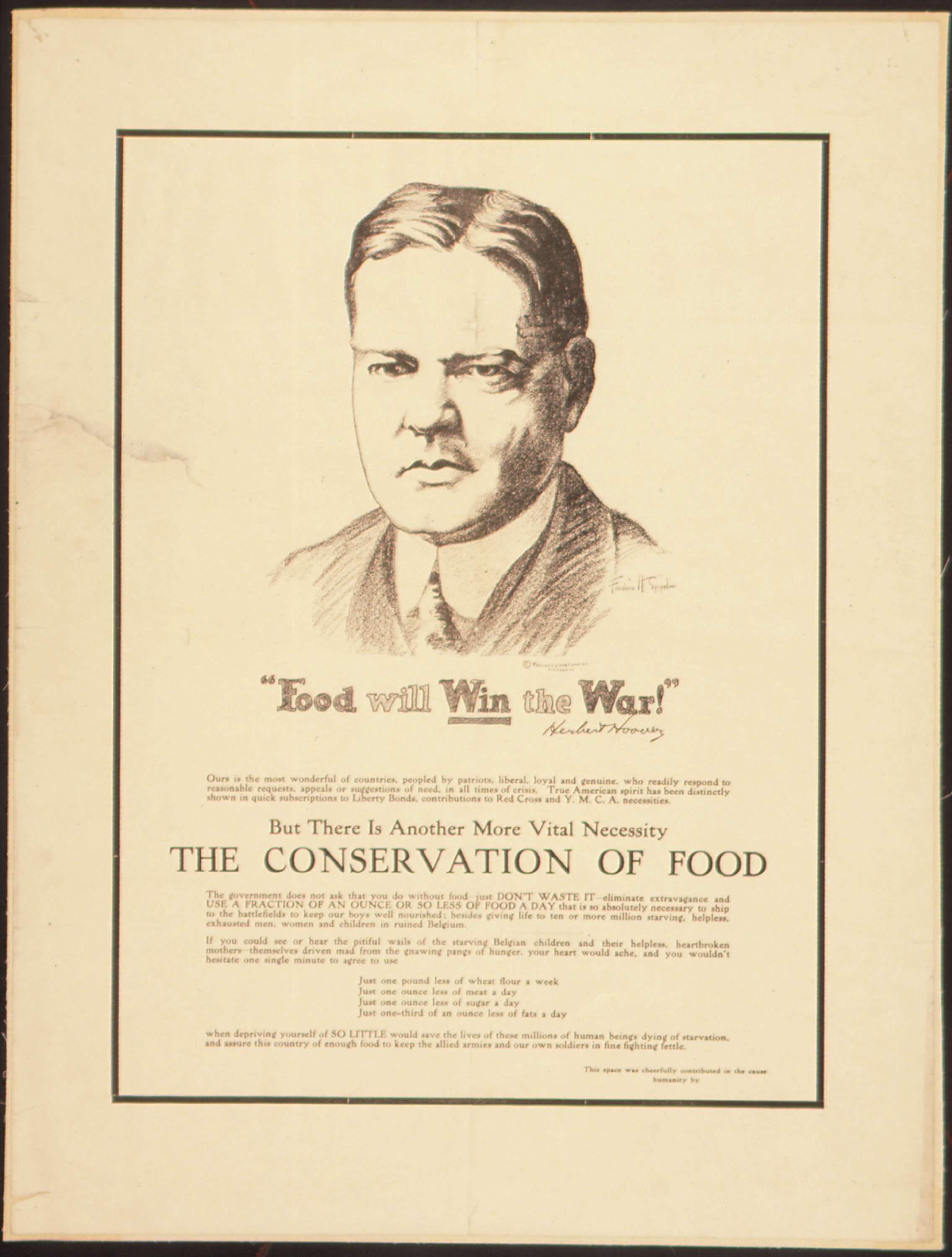
Document
The full caption for this item is as follows: American Red Cross canteens, United States. Taking food to the [African American] family all down with the 'Flu'
ca. 1917 -1919
The full caption for this photograph reads: American Red Cross canteens, United States. Taking food to the [African American] family all down with the "Flu" at Charlotte, North Carolina. They found the mother had just died. Mrs. Ralph Van Landingham, Mrs. Camson Morrison, Miss Julia Baxter Scott.
This primary source comes from the Records of the War Department General and Special Staffs.
National Archives Identifier: 533586
Full Citation: Photograph 165-WW-127(94); The full caption for this item is as follows: American Red Cross canteens, United States. Taking food to the [African American] family all down with the 'Flu'; ca. 1917 -1919; American Unofficial Collection of World War I Photographs, 1917 - 1918; Records of the War Department General and Special Staffs, ; National Archives at College Park, College Park, MD. [Online Version, https://docsteach.org/documents/document/red-cross-food-family, April 28, 2024]The full caption for this item is as follows: American Red Cross canteens, United States. Taking food to the [African American] family all down with the 'Flu'
Page 1
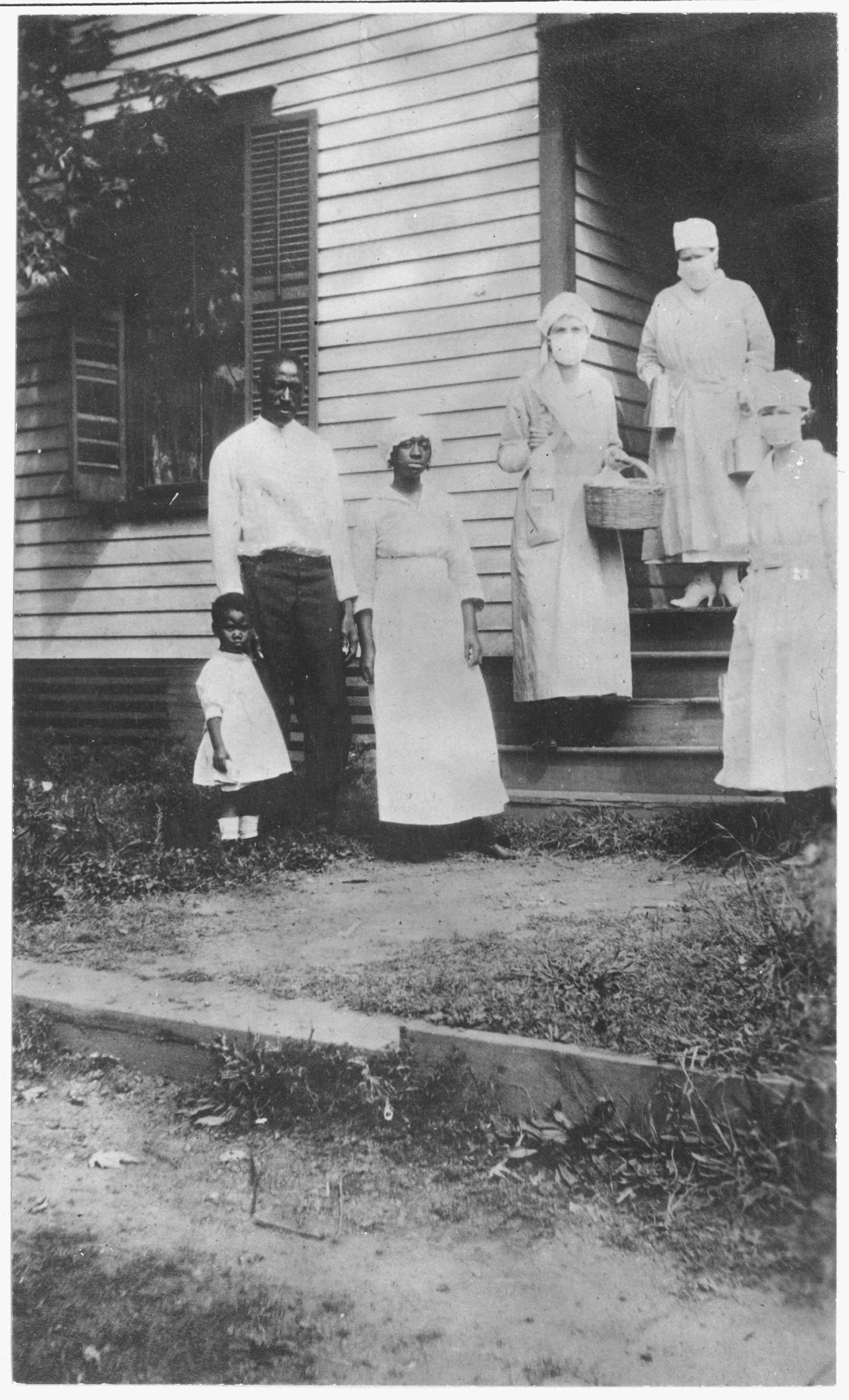
Document
Letter from Harry S. Truman to Bess Wallace
1/21/1919
Truman's letter includes references to the deadly influenza epidemic that followed World War I. He expresses his relief that Bess has recovered from the flu, and tells her that he has carried her picture (the one she sent him at Camp Doniphan) with him throughout the war. He says that he is eager to come home and wishes that the "ex-mayor of Toledo" (Secretary of War Newton Baker, who was actually an ex-mayor of Cleveland) would arrange this; along with the other American soldiers, he does not care about the peace plans of "Woodie" (President Woodrow Wilson) or European political struggles. He also alludes to the adoption of Prohibition in the United States, commenting that he wants to get back home and "lay in a supply for future consumption."
Transcript
Knights of ColumbusOverseas Service
On Active Service with American Expeditionary Forces
A.P.O. Camp La Beholle near Verdun
Date Jan. 21 1919
Dear Bess:-
Your grand letter of Dec 26 came last night and of course I was as happy as a kid with a bonbon, I am so glad you had a happy white Christmas. It is a good omen I'm sure and I sincerely hope that "flu" will be an unheard of ailment from this time forward. Your point is well taken regarding the furniture in my room at the Hotel Medeterranee (can't spell it). It would of course be essential to provide either a place to eat or a range. I am very sure that I shouldn't have overlooked a vital point like that even if I am blinded by Eros. My experiences to date have taught me most emphatically that it is very very essential that food be provided in plentiful quantities even if clothing has to be overlooked sometimes. Some of my men have been pretty close to nature at various times as to clothes but if there happened to be plenty of roast beef and baked beans it was
a happy lunch. But leave off the eats for a meal or two and it made one "h- of a mean man" to put it as they do. Therefore I won't overlook that end of it nor any other I hope. The stationary George and May gave you is simply grand and it makes me sorry to have to answer it on this kind but even this hand is at a high premium here. I think May's picture is pretty fine myself. You know I have two breast pockets in my blouse. Naturally you can guess whose picture stays in the left hand one. I keep May's and Mamma's in the other. Yours is the one you sent me at Doniphon and it has never left me from that day to this nor will it ever. It's been through all the trials and tribulations and happy moments same as I have. I have looked at it many many times and imagined that you were there in spirit as I know you were and its helped a lot especially when things were blue and it would look as if I'd surely blow up if another thing went wrong. I've never blown up and my disposition isn't so very bad. That picture saved it. The biggest worry I've ever had was when I heard that the original of that picture had the "flu" and the happiest day was when that letter came saying you'd walked up
Knights of Columbus
Overseas Service
On Active Service with American Expeditionary Forces
APO
DATE
town. I am hoping that Nice will not be an impossibility to us and I don't believe it will. You did right to send your proxy to Boxley. He's to be trusted absolutely.
We are having another spasm of moving. There have been orders out twice to move up back to a dirty little old French village but each time Gen. Berry has been able to get them canceled, because we have better quarters here than we can possibly get in a town. I suppose though that we'll go this time. Heard a real good rumor the other day. To show you how they start I'll just trace this one for you. An ordinance sergeant (get that ordAnance) who was overhauling F.Bty's guns told the Lt. who went after them that his own commanding officer, a Lt. had been told by the Generals aide that our guns were being overhauled so that they could be turned in at Le Mans on
Jan 27 which happens to be the Kaiser's birthday (so he said) and then we'd all go home. Now the whole foundation for that nice tale was the definite order for us to move back to a little old village and be billeted not far from Bar-le-Duc and about 40 miles from here. It's my opinion that we'll stay there until Woodie gets his pet peace plans refused or OKed. For my part, and every AEF man feels the same way, I don't give a whoop (to put it mildly) whether there's a league of nations or whether Russia has a Red Government or a Purple one and if the President of the Czechs-Slavocs wants to pry the throne from under the King of Bohemia let him pry but send us home. We came over here to help whip the Hun. We helped a little, the Hun yowled for peace and he's getting in in large doses and if our most excellent ex mayor of Toledo wants to make a hit with us he'll hire or buy some ships and put the Atlantic Ocean between us and the Vin Rouge Sea. For my part I've had enough Vin Rouge and Frogeater victuals to last me a lifetime. And anyway it looks to me like the moon shine business is going to be pretty good in the land of Liberty Loans and Green Trading stamps and some of us want to get in on
Knights of Columbus
Overseas Service
On Active Service with American Expeditionary Forces
APO
DATE
the ground floor. At least we want to get there in time to buy in a supply for future consumption. I think a quart of Bourbon would last me about forty years.
I hope you have a most happy birthday and that you never see another one without me to help celebrate and then may they go on without end. Remember me to your mother and Fred and Frank and Natalie and George and May and just keep writing when you feel inclined because I love you.
Always,
Harry
Harry Truman
Capt. Bty D129 Fa
American E.F.
Overseas Service
On Active Service with American Expeditionary Forces
APO
DATE
the ground floor. At least we want to get there in time to buy in a supply for future consumption. I think a quart of Bourbon would last me about forty years.
I hope you have a most happy birthday and that you never see another one without me to help celebrate and then may they go on without end. Remember me to your mother and Fred and Frank and Natalie and George and May and just keep writing when you feel inclined because I love you.
Always,
Harry
Harry Truman
Capt. Bty D129 Fa
American E.F.
This primary source comes from the Collection HST-FBP: Harry S. Truman Papers Pertaining to Family, Business and Personal Affairs.
National Archives Identifier: 200650
Full Citation: Letter from Harry S. Truman to Bess Wallace; 1/21/1919; Correspondence from Harry S. Truman to Bess Wallace Truman; Family Correspondence Files, 1910 - 1959; Collection HST-FBP: Harry S. Truman Papers Pertaining to Family, Business and Personal Affairs, ; Harry S. Truman Library, Independence, MO. [Online Version, https://docsteach.org/documents/document/harry-truman-to-bess-wallace, April 28, 2024]Letter from Harry S. Truman to Bess Wallace
Page 1

Letter from Harry S. Truman to Bess Wallace
Page 2
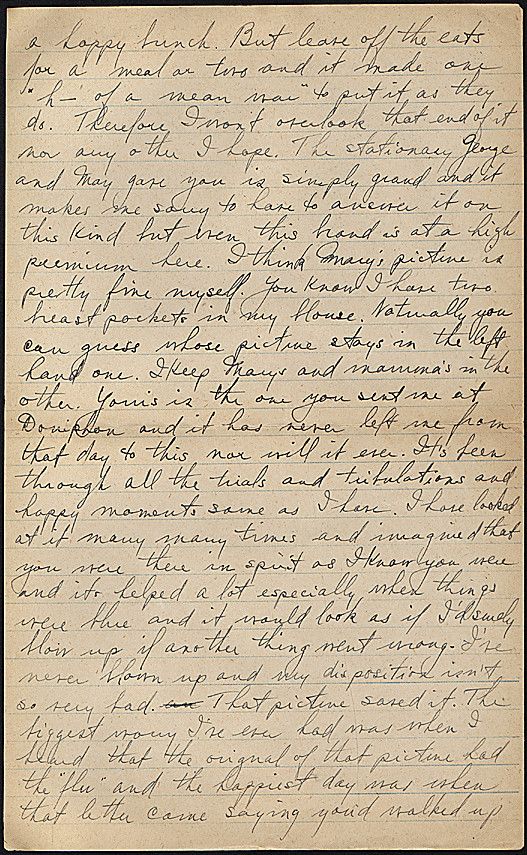
Letter from Harry S. Truman to Bess Wallace
Page 3
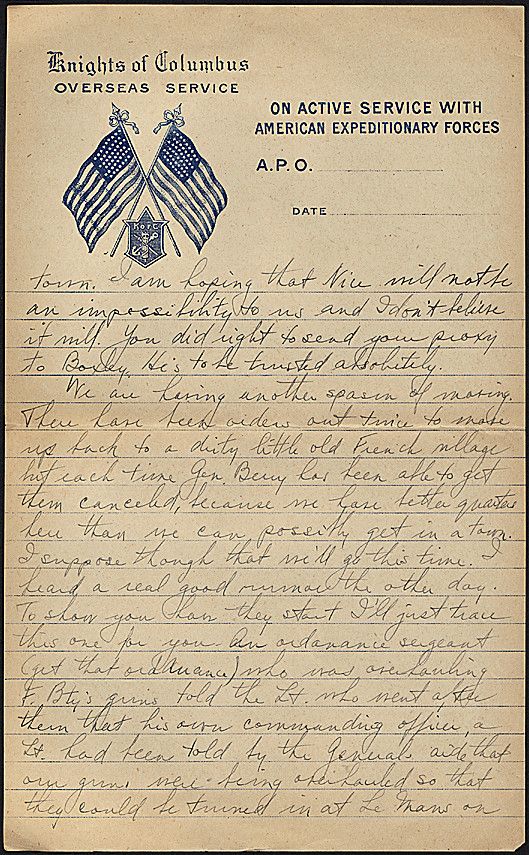
Letter from Harry S. Truman to Bess Wallace
Page 4

Letter from Harry S. Truman to Bess Wallace
Page 5
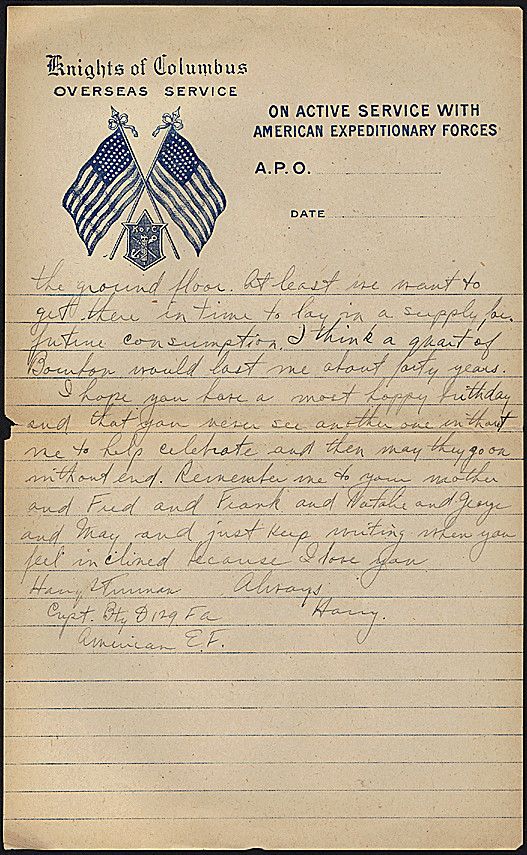
Document
French soldiers making a gas and flame attack on German trenches in Flanders. Belgium
This primary source comes from the Records of the Office of the Chief Signal Officer.
National Archives Identifier: 530722
Full Citation: French soldiers making a gas and flame attack on German trenches in Flanders. Belgium; Records of the Office of the Chief Signal Officer, . [Online Version, https://docsteach.org/documents/document/french-soldiers-making-a-gas-and-flame-attack-on-german-trenches-in-flanders-belgium, April 28, 2024]French soldiers making a gas and flame attack on German trenches in Flanders. Belgium
Page 2
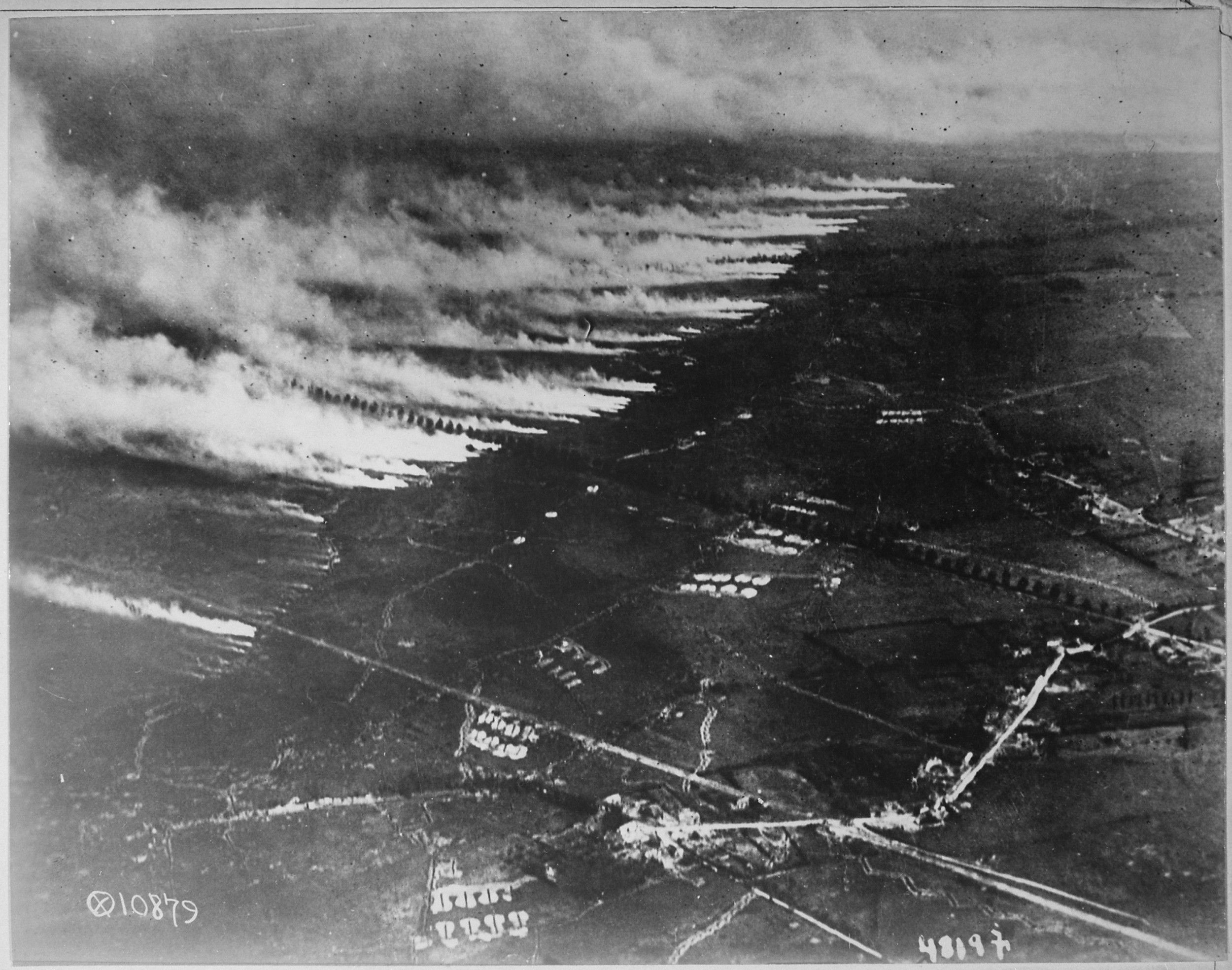
Document
Manufacturing airplanes for the government by Dayton-Wright Airplane Company. Completed plane on exhibition. Plant-1. Operation Number 4. Dayton Wright Airplane Company.
7/25/1918
This primary source comes from the Records of the War Department General and Special Staffs.
National Archives Identifier: 533465
Full Citation: Photograph 165-WW-11A(7); Manufacturing airplanes for the government by Dayton-Wright Airplane Company. Completed plane on exhibition. Plant-1. Operation Number 4. Dayton Wright Airplane Company.; 7/25/1918; American Unofficial Collection of World War I Photographs, 1917 - 1918; Records of the War Department General and Special Staffs, ; National Archives at College Park, College Park, MD. [Online Version, https://docsteach.org/documents/document/manufacturing-airplanes-government, April 28, 2024]Manufacturing airplanes for the government by Dayton-Wright Airplane Company. Completed plane on exhibition. Plant-1. Operation Number 4. Dayton Wright Airplane Company.
Page 1
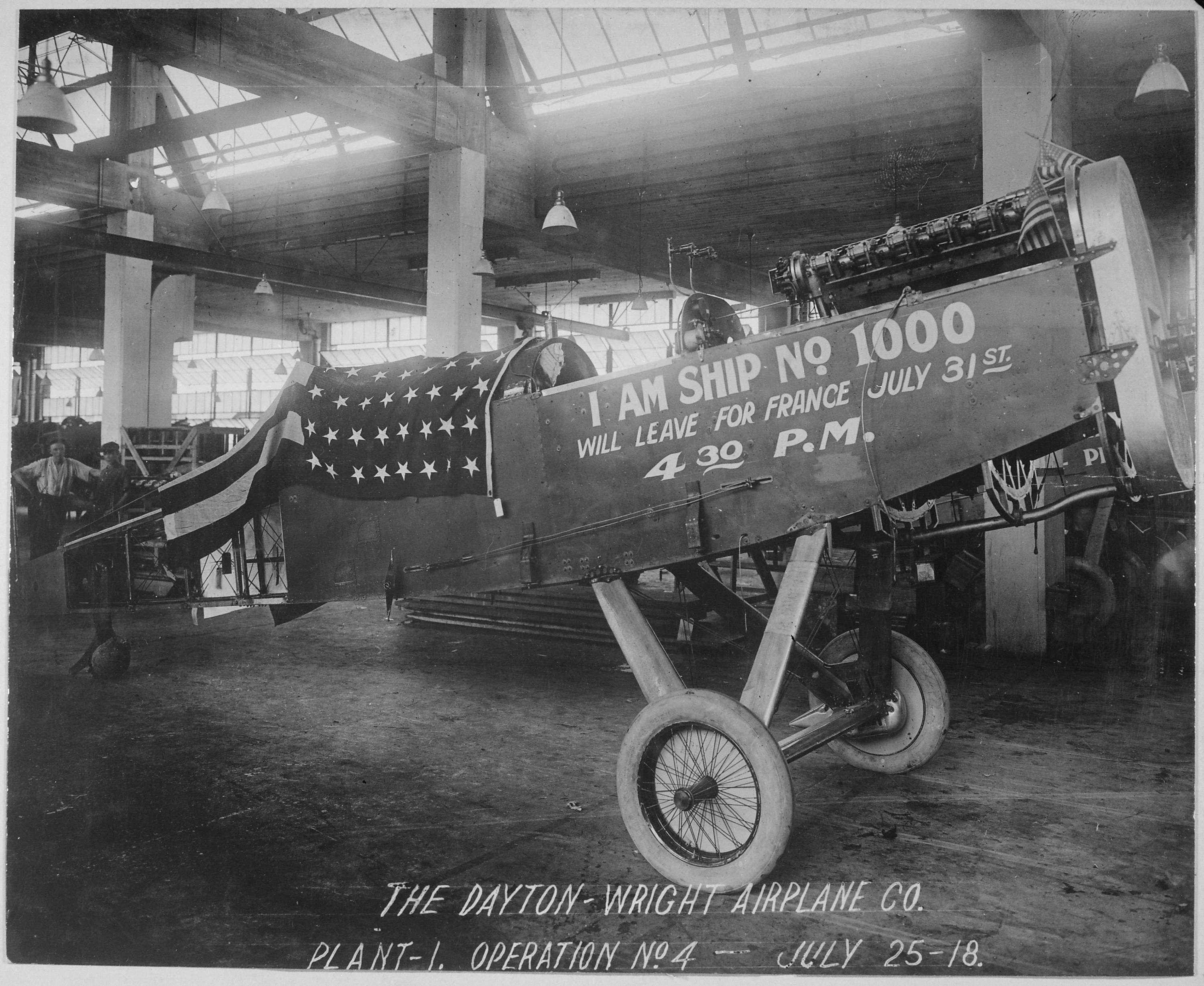
Document
Wounded German prisoners receiving medical attention at first-aid station of 103rd and 104th Ambulance Companies. German second-line trench
9/12/1918
This primary source comes from the Records of the Office of the Chief Signal Officer.
National Archives Identifier: 530754
Full Citation: Wounded German prisoners receiving medical attention at first-aid station of 103rd and 104th Ambulance Companies. German second-line trench; 9/12/1918; Records of the Office of the Chief Signal Officer, . [Online Version, https://docsteach.org/documents/document/wounded-german-prisoners-receiving-medical-attention-at-firstaid-station-of-103rd-and-104th-ambulance-companies-german-secondline-trench, April 28, 2024]Wounded German prisoners receiving medical attention at first-aid station of 103rd and 104th Ambulance Companies. German second-line trench
Page 2

Document
Marine receiving first aid before being sent to hospital in rear of trenches. Toulon Sector, France
3/22/1918
This primary source comes from the Records of the Office of the Chief Signal Officer.
National Archives Identifier: 530724
Full Citation: Marine receiving first aid before being sent to hospital in rear of trenches. Toulon Sector, France; 3/22/1918; Records of the Office of the Chief Signal Officer, . [Online Version, https://docsteach.org/documents/document/marine-receiving-first-aid-before-being-sent-to-hospital-in-rear-of-trenches-toulon-sector-france, April 28, 2024]Marine receiving first aid before being sent to hospital in rear of trenches. Toulon Sector, France
Page 2
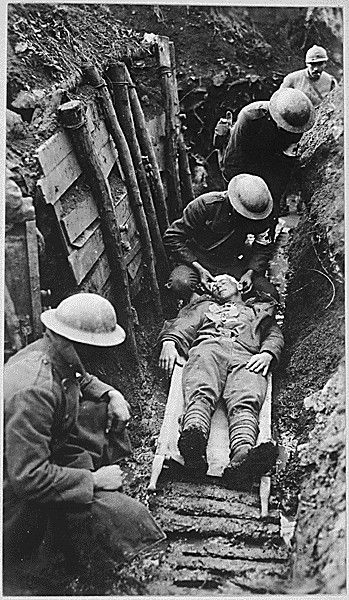
Document
Famous [African American] regiment arrives home from France. [The] 369th New York Infantry (Old 15th) of [African American] troops listening to their band play its last tune before debarking at Hoboken, New Jersey.
2/10/1919
The original caption for this item is as follows: Famous [African American] regiment arrives home from France. [The] 369th New York Infantry (Old 15th) of [African American] troops listening to their band play its last tune before debarking at Hoboken, New Jersey.
The 369th Infantry Regiment, more famously known as the Harlem Hellfighters, was an infantry regiment during World War I. The regiment is well known for its participation in several key battles including Champagne-Marne, Aisne-Marne, Belleau Wood, Chateau-Thierry and Meuse-Argonne. By the end of the 369th Infantry’s campaign, they suffered 1,500 casualties, the highest of any U.S. regiment. They also spent 191 days in front-line trenches, longer than any unit of their size. Upon the regiment’s arrival in the United States, they were celebrated with a parade in New York City.
The members of the 369th Infantry Regiment, despite facing racism at home and in the military, served their country honorably. Their dedicated service played a key role in the success of the United States’ participation in World War I. Over 100 soldiers were presented with American and French decorations. Honors and awards given to the Harlem Hellfighters include, one Medal of Honor, numerous Distinguished Service Crosses, 170 individual Croix de Guerre, a regimental Croix de Guerre, and several unit citations. The Regiment was awarded the Congressional Gold Medal in August 2021.
The 369th Infantry Regiment, more famously known as the Harlem Hellfighters, was an infantry regiment during World War I. The regiment is well known for its participation in several key battles including Champagne-Marne, Aisne-Marne, Belleau Wood, Chateau-Thierry and Meuse-Argonne. By the end of the 369th Infantry’s campaign, they suffered 1,500 casualties, the highest of any U.S. regiment. They also spent 191 days in front-line trenches, longer than any unit of their size. Upon the regiment’s arrival in the United States, they were celebrated with a parade in New York City.
The members of the 369th Infantry Regiment, despite facing racism at home and in the military, served their country honorably. Their dedicated service played a key role in the success of the United States’ participation in World War I. Over 100 soldiers were presented with American and French decorations. Honors and awards given to the Harlem Hellfighters include, one Medal of Honor, numerous Distinguished Service Crosses, 170 individual Croix de Guerre, a regimental Croix de Guerre, and several unit citations. The Regiment was awarded the Congressional Gold Medal in August 2021.
This primary source comes from the Records of the War Department General and Special Staffs.
National Archives Identifier: 533548
Full Citation: Photograph 165-WW-127(60B); Famous [African American] regiment arrives home from France. [The] 369th New York Infantry (Old 15th) of [African American] troops listening to their band play its last tune before debarking at Hoboken, New Jersey.; 2/10/1919; American Unofficial Collection of World War I Photographs, 1917 - 1918; Records of the War Department General and Special Staffs, ; National Archives at College Park, College Park, MD. [Online Version, https://docsteach.org/documents/document/famous-regiment-hoboken, April 28, 2024]Famous [African American] regiment arrives home from France. [The] 369th New York Infantry (Old 15th) of [African American] troops listening to their band play its last tune before debarking at Hoboken, New Jersey.
Page 1
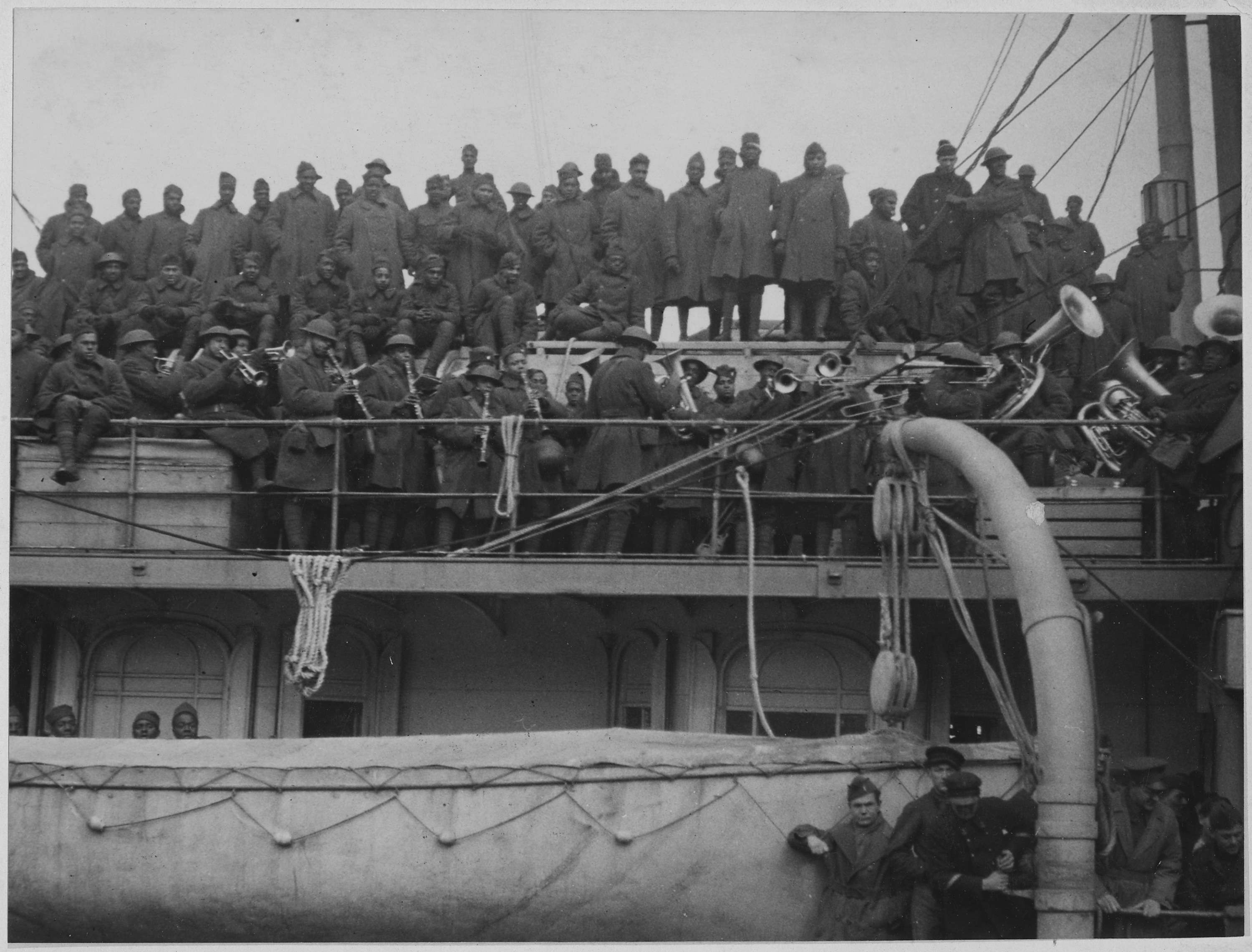
Document
American Negro Infantrymen at Roll Call Somewhere in France
1917 - ca. 1919
This image shows soldiers somewhere in France during World War I.
The original caption for this photograph uses the term "negro" to refer to Black people, which was commonly accepted in that era, but is outdated and inappropriate today.
The original caption for this photograph uses the term "negro" to refer to Black people, which was commonly accepted in that era, but is outdated and inappropriate today.
This primary source comes from the Records of the War Department General and Special Staffs.
National Archives Identifier: 533604
Full Citation: Photograph 165-WW-127(112); American Negro Infantrymen at Roll Call Somewhere in France; 1917 - ca. 1919; American Unofficial Collection of World War I Photographs, 1917 - 1918; Records of the War Department General and Special Staffs, ; National Archives at College Park, College Park, MD. [Online Version, https://docsteach.org/documents/document/african-american-infantrymen-france, April 28, 2024]American Negro Infantrymen at Roll Call Somewhere in France
Page 2

Document
Photograph of Marine Corps First Class Private Edith Macies
ca. 1918
Edith Macies, a Private First Class in the U.S. Marine Corps Reserve, is shown in this photograph from late in World War I. More than 300 women joined the U.S. Marine Corps Reserve during 1918. They performed clerical duties, allowing the men who had done those jobs to go to the front.
This primary source comes from the Records of the War Department General and Special Staffs.
National Archives Identifier: 595866
Full Citation: Photograph 165-WW-598A-10; Photograph of Marine Corps First Class Private Edith Macies; ca. 1918; American Unofficial Collection of World War I Photographs, 1917 - 1918; Records of the War Department General and Special Staffs, ; National Archives at College Park, College Park, MD. [Online Version, https://docsteach.org/documents/document/first-class-private-edith-macies, April 28, 2024]Photograph of Marine Corps First Class Private Edith Macies
Page 1

Document
If You Want to Fight! Join the Marines
1918
Additional details from our exhibits and publications
On Howard Chandler Christy’s World War I poster, a beautiful young woman in a marine sergeant’s uniform beckons volunteers to join the Marines. During World War I, the Marine Corps almost doubled its strength with the addition of 60,189 men.
This primary source comes from the Records of the U.S. Food Administration.
National Archives Identifier: 512491
Full Citation: If You Want to Fight! Join the Marines; 1918; Records of the U.S. Food Administration, . [Online Version, https://docsteach.org/documents/document/if-you-want-to-fight-join-the-marines, April 28, 2024]If You Want to Fight! Join the Marines
Page 1
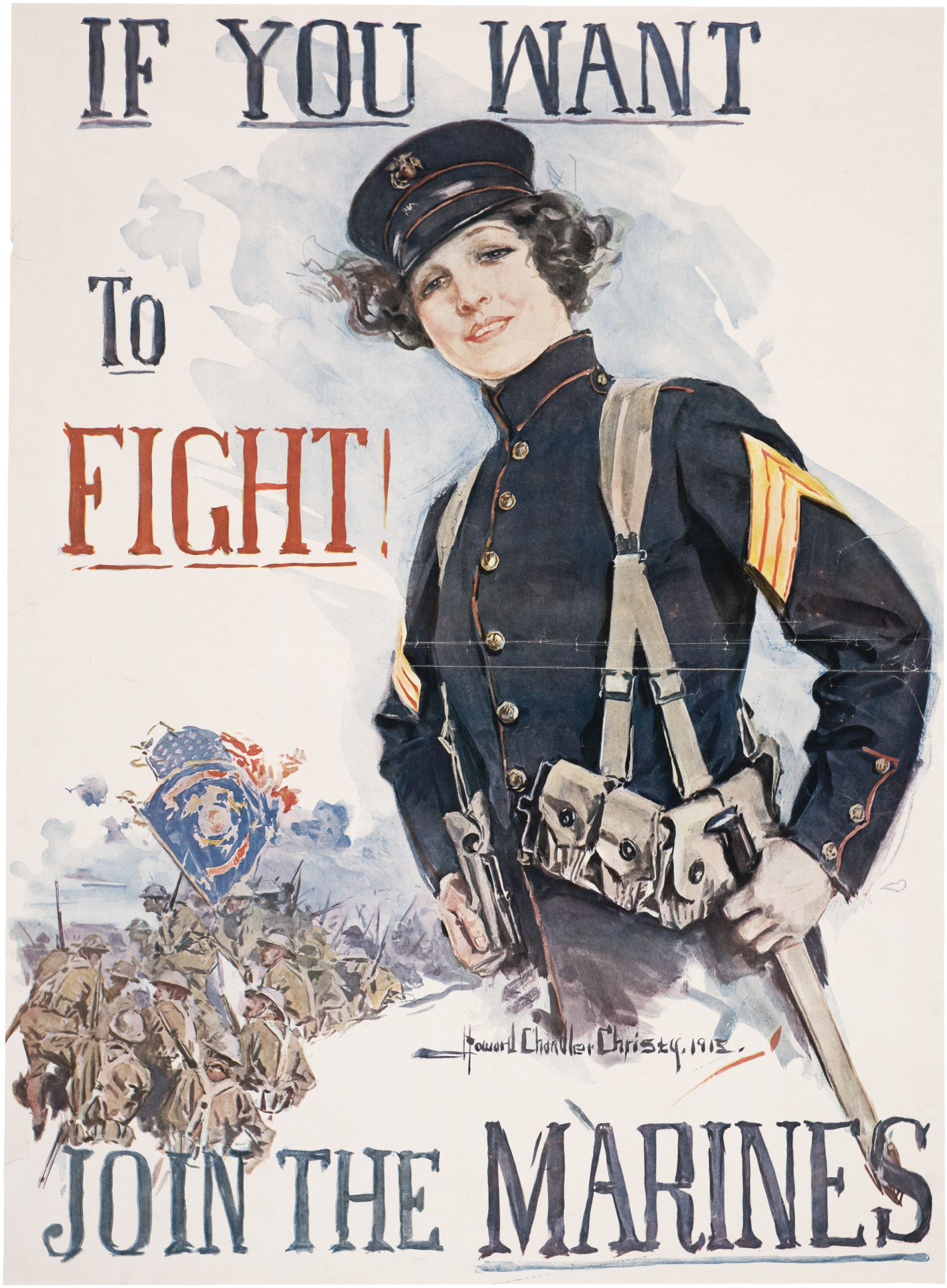
Document
Riveter at work at Hog Island Shipyard. Pennsylvania
1918
Additional details from our exhibits and publications
During World War I, the government contracted for cargo ships and a few transport ships to built on Hog Island, outside Philadelphia, Pennsylvania. At the time it was the largest shipyard in the world.
This primary source comes from the Records of the War Department General and Special Staffs.
National Archives Identifier: 533745
Full Citation: Photograph 165-WW-509B(4); Riveter at work at Hog Island Shipyard. Pennsylvania; 1918; American Unofficial Collection of World War I Photographs, 1917 - 1918; Records of the War Department General and Special Staffs, ; National Archives at College Park, College Park, MD. [Online Version, https://docsteach.org/documents/document/riveter-hog-island, April 28, 2024]Riveter at work at Hog Island Shipyard. Pennsylvania
Page 1
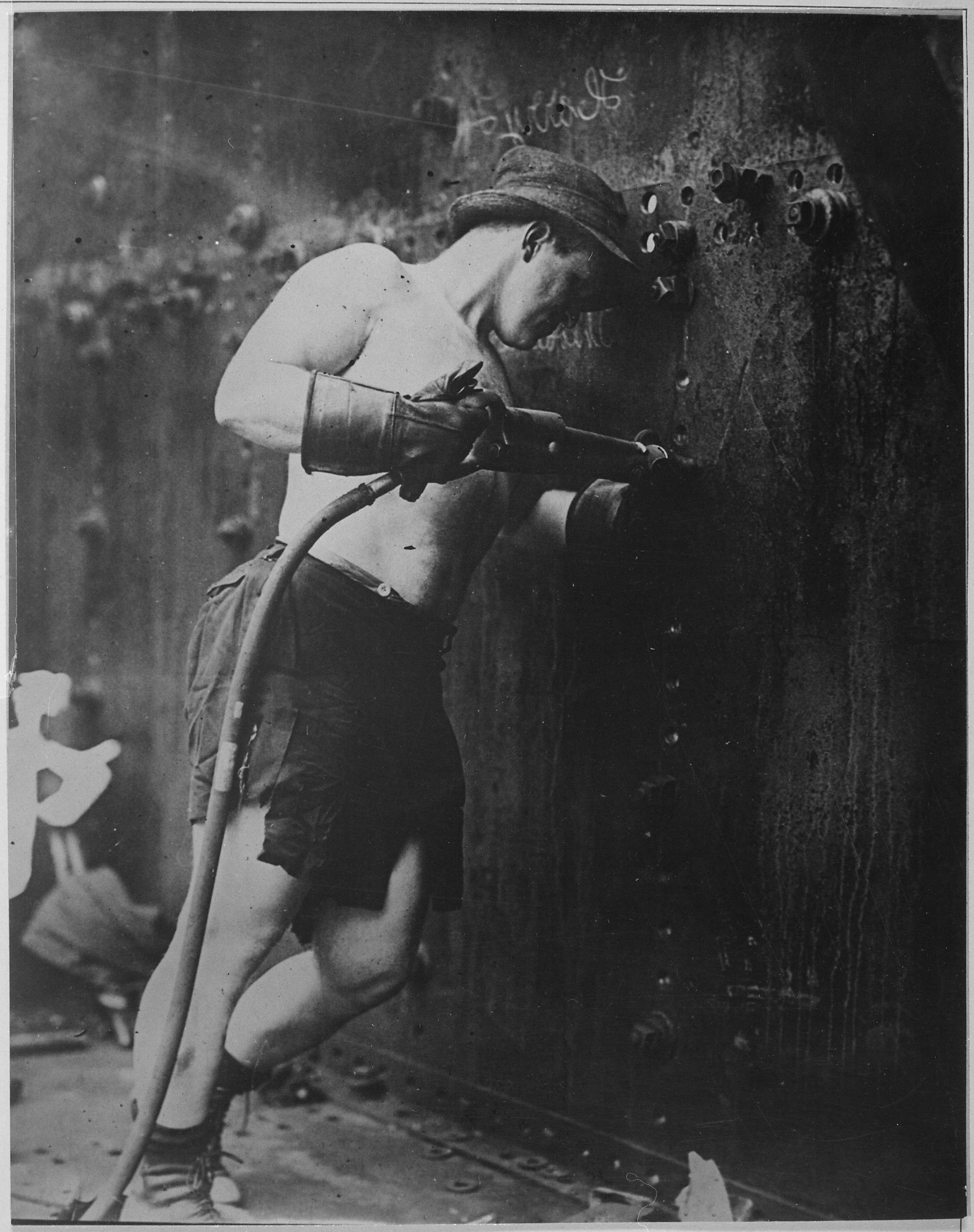
Document
Patriotic old women make flags. Born in Hungary, Galicia, Russia, Germany, Rumania. Their flag-making instructor, Rose Radin, is standing. Underwood and Underwood
ca. 1918
This primary source comes from the Records of the War Department General and Special Staffs.
National Archives Identifier: 533657
Full Citation: Patriotic old women make flags. Born in Hungary, Galicia, Russia, Germany, Rumania. Their flag-making instructor, Rose Radin, is standing. Underwood and Underwood; ca. 1918; Records of the War Department General and Special Staffs, . [Online Version, https://docsteach.org/documents/document/patriotic-old-women-make-flags-born-in-hungary-galicia-russia-germany-rumania-their-flagmaking-instructor-rose-radin-is-standing-underwood-and-underwood, April 28, 2024]Patriotic old women make flags. Born in Hungary, Galicia, Russia, Germany, Rumania. Their flag-making instructor, Rose Radin, is standing. Underwood and Underwood
Page 1
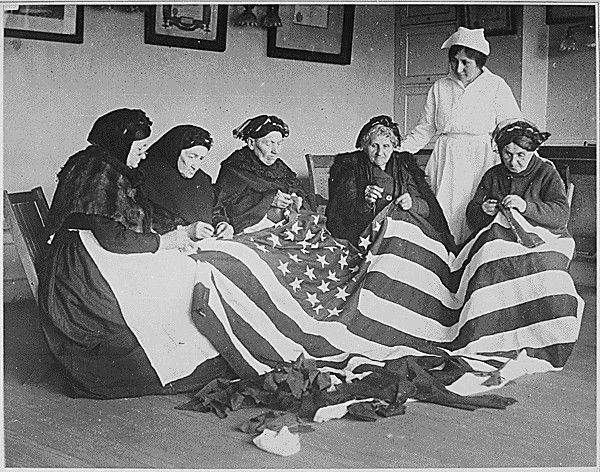
Document
World War I Draft Registration Card for Norman Rockwell
ca. 1917
The draft registration card of Norman Rockwell indicates that he worked as a freelance artist. The Selective Service Act of May 18, 1917, authorized the President to temporarily increase the U.S. military. Under the authority of this act and later acts, the Army's Office of the Provost Marshall General supervised the registrations of approximately 24 million men for the World War I draft. Three registrations were held: the first, on June 5, 1917, for men aged 21 through 30; the second, on June 5, 1918, for men who had become 21 since June 5, 1917, supplemented by a registration held August 24, 1918, for men who had become 21 since June 2, 1918; and, the third, on September 12, 1918, for all men aged 18 through 45 who had not previously registered. The existence of a draft card does not necessarily denote military service. Registration is often confused with induction into the military; however, only a small percentage of those who registered were actually inducted into the military. The reverse is also true. All men who served in World War I did not necessarily register for the draft. Those who volunteered or those who were already in the military did not register.
This primary source comes from the Records of the Selective Service System (World War I).
National Archives Identifier: 641776
Full Citation: World War I Draft Registration Card for Norman Rockwell; ca. 1917; Records of the Selective Service System (World War I), . [Online Version, https://docsteach.org/documents/document/world-war-i-draft-registration-card-for-norman-rockwell, April 28, 2024]World War I Draft Registration Card for Norman Rockwell
Page 1

Document
World War I Draft Registration Card for George Herman Ruth
6/5/1917
This is the World War I draft card for George Herman Ruth, known as Babe Ruth. It indicates that he worked as a baseball player, employed at Fenway Park in Boston, Massachusetts.
On May 18, 1917, Congress passed the Selective Service Act, which authorized the Federal Government to temporarily expand the military through conscription. The act eventually required all men between the ages of 21 to 45 to register for military service. Under the act, approximately 24 million men registered for the draft. Of the total U.S. troops sent to Europe, 2.8 million men had been drafted, and 2 million men had volunteered.
This primary source comes from the Records of the Selective Service System (World War I).
National Archives Identifier: 641780
Full Citation: World War I Draft Registration Card for George Herman Ruth; 6/5/1917; Draft Registration Cards, 1917 - 1918; Records of the Selective Service System (World War I), ; National Archives at Atlanta, Morrow, GA. [Online Version, https://docsteach.org/documents/document/draft-card-babe-ruth, April 28, 2024]World War I Draft Registration Card for George Herman Ruth
Page 1

World War I Draft Registration Card for George Herman Ruth
Page 2
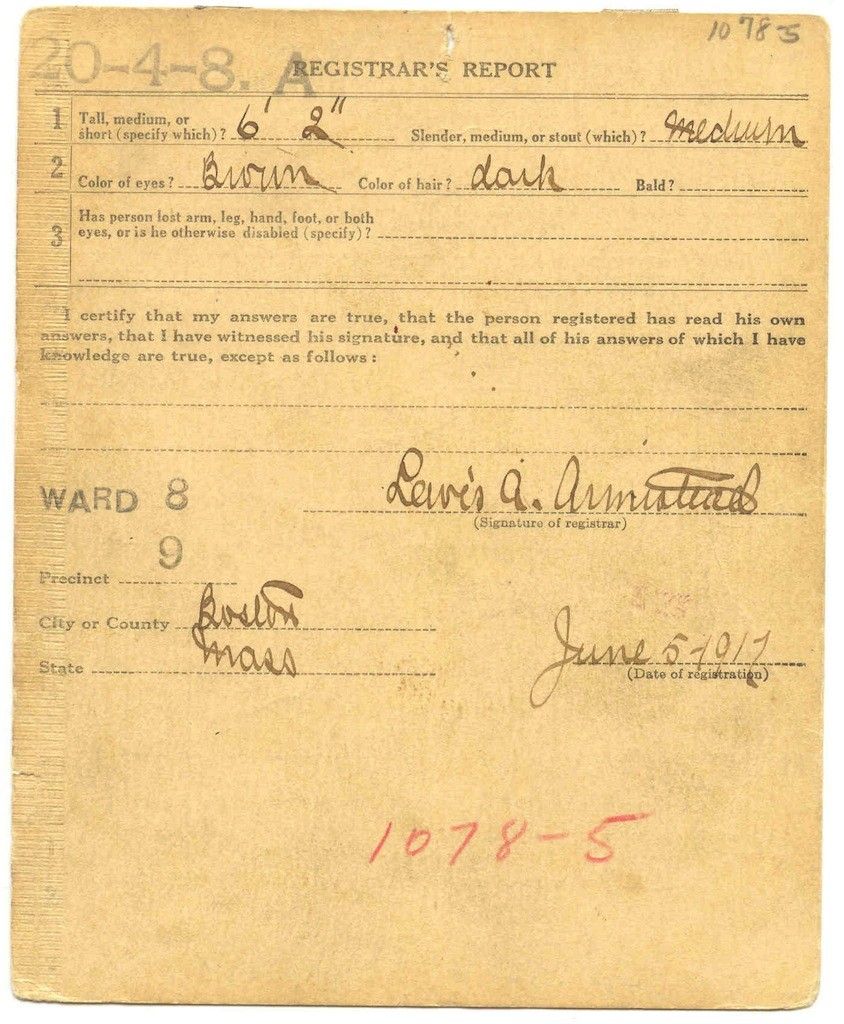
Document
Girls operate stock boards at Waldorf-Astoria. The Waldorf-Astoria Hotel is employing girls to operate tickers and stock exchange boards. The Waldorf is the first to employ girls in its various depart
11/12/1918
This primary source comes from the Records of the War Department General and Special Staffs.
National Archives Identifier: 533759
Full Citation: Girls operate stock boards at Waldorf-Astoria. The Waldorf-Astoria Hotel is employing girls to operate tickers and stock exchange boards. The Waldorf is the first to employ girls in its various depart; 11/12/1918; Records of the War Department General and Special Staffs, . [Online Version, https://docsteach.org/documents/document/girls-operate-stock-boards-at-waldorfastoria-the-waldorfastoria-hotel-is-employing-girls-to-operate-tickers-and-stock-exchange-boards-the-waldorf-is-the-first-to-employ-girls-in-its-various-department, April 28, 2024]Girls operate stock boards at Waldorf-Astoria. The Waldorf-Astoria Hotel is employing girls to operate tickers and stock exchange boards. The Waldorf is the first to employ girls in its various depart
Page 1
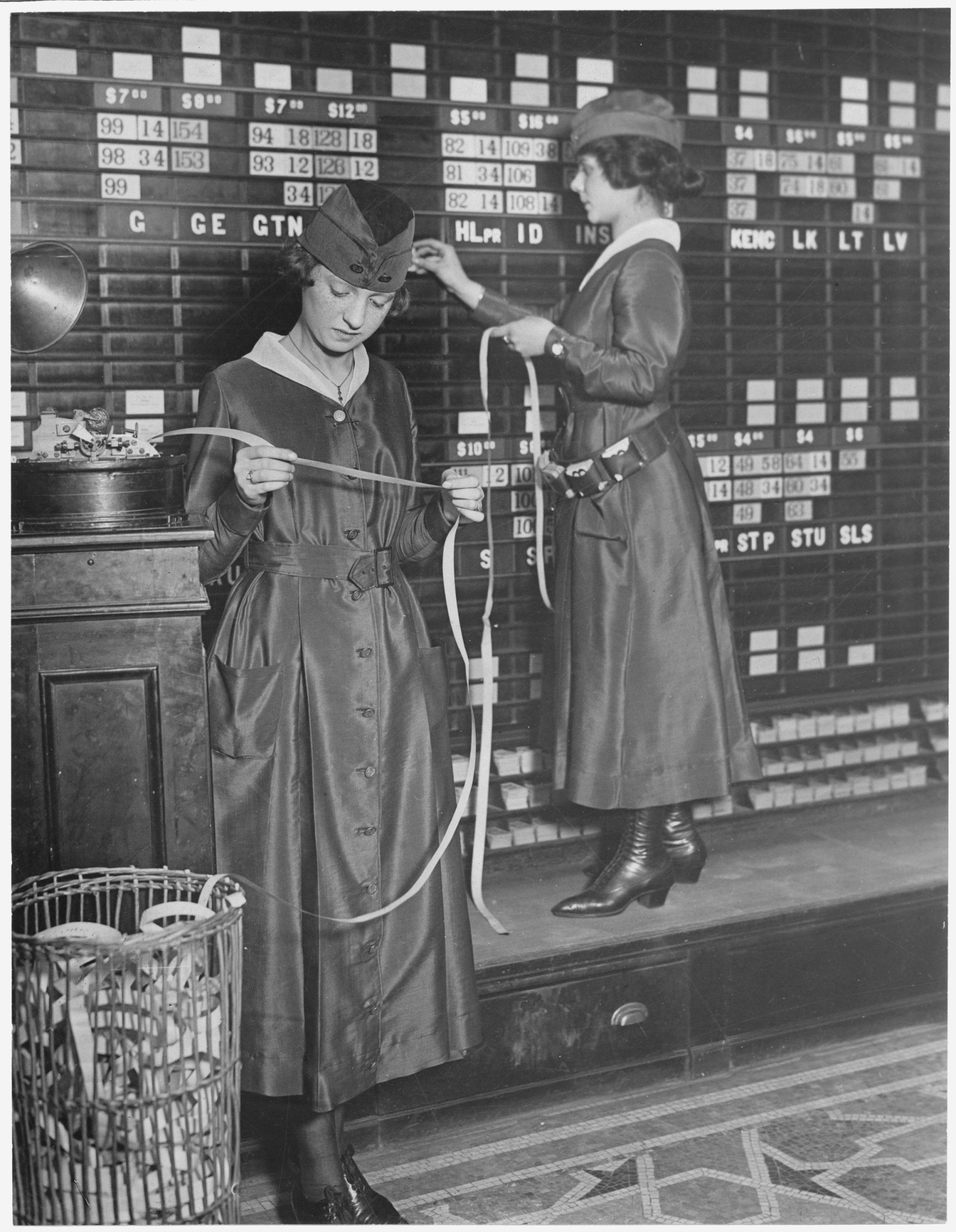
Document
Girls deliver ice. Heavy work that formerly belonged to men only is being done by girls. The ice girls are delivering ice on a route and their work requires brawn as well as the patriotic ambition to help.
9/16/1918
The original caption for this photograph reads: Girls deliver ice. Heavy work that formerly belonged to men only is being done by girls. The ice girls are delivering ice on a route and their work requires brawn as well as the patriotic ambition to help.
It comes from a series of the photos assembled by the Committee for Public Information and considered to be the "Unofficial Collection of World War I Photographs." Some of the photographs depict the unity of the nation and how overwhelming the war effort was. There are pictures of bonds; savings stamps and war loan drives; public gatherings; peace demonstrations and parades.
It comes from a series of the photos assembled by the Committee for Public Information and considered to be the "Unofficial Collection of World War I Photographs." Some of the photographs depict the unity of the nation and how overwhelming the war effort was. There are pictures of bonds; savings stamps and war loan drives; public gatherings; peace demonstrations and parades.
This primary source comes from the Records of the War Department General and Special Staffs.
National Archives Identifier: 533758
Full Citation: Photograph 165-WW-595A(3); Girls deliver ice. Heavy work that formerly belonged to men only is being done by girls. The ice girls are delivering ice on a route and their work requires brawn as well as the patriotic ambition to help.; 9/16/1918; American Unofficial Collection of World War I Photographs, 1917 - 1918; Records of the War Department General and Special Staffs, ; National Archives at College Park, College Park, MD. [Online Version, https://docsteach.org/documents/document/girls-deliver-ice, April 28, 2024]Girls deliver ice. Heavy work that formerly belonged to men only is being done by girls. The ice girls are delivering ice on a route and their work requires brawn as well as the patriotic ambition to help.
Page 1
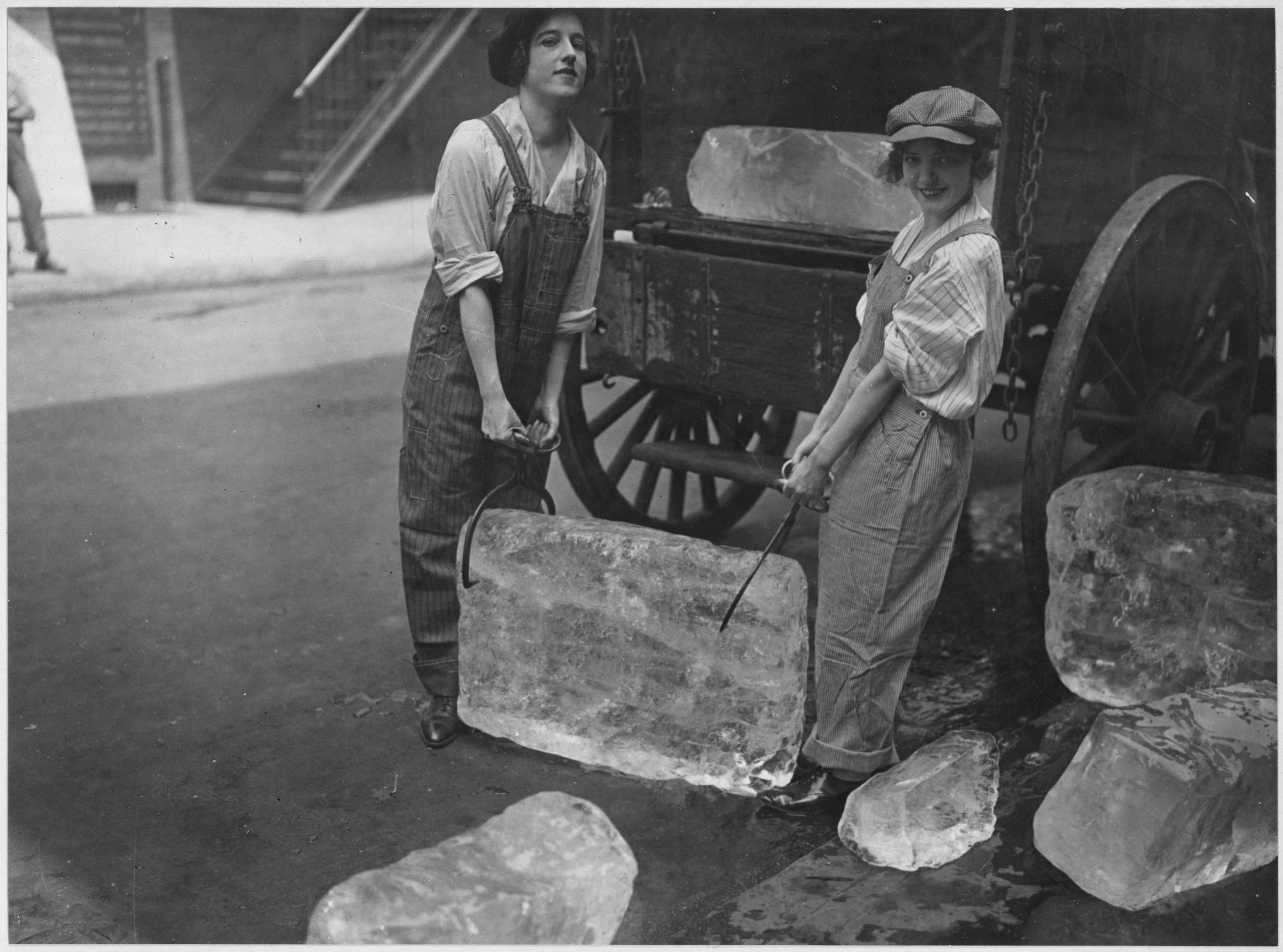
Document
'Fight or Buy Bonds. Third Liberty Loan.'
1917
Additional details from our exhibits and publications
American artist Howard Chandler Christy created this poster for the Third Liberty Loan war bond drive during World War I. Published in 1917 by Forbes of Boston, the poster shows “America” waving a flag encouraging Americans to help with the war effort by joining the military or purchasing bonds to finance the war. Christy, one of the best-known artists in America before the war, created many World War I posters.
This primary source comes from the Records of the U.S. Food Administration.
National Archives Identifier: 512621
Full Citation: 'Fight or Buy Bonds. Third Liberty Loan.'; 1917; Records of the U.S. Food Administration, . [Online Version, https://docsteach.org/documents/document/fight-or-buy-bonds-third-liberty-loan, April 28, 2024]'Fight or Buy Bonds. Third Liberty Loan.'
Page 2

